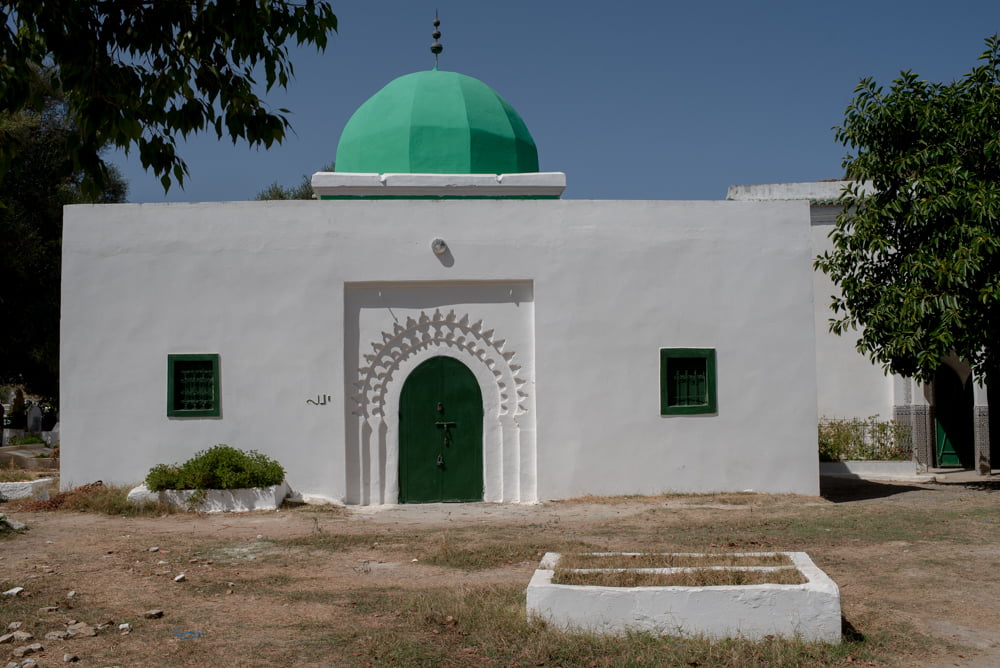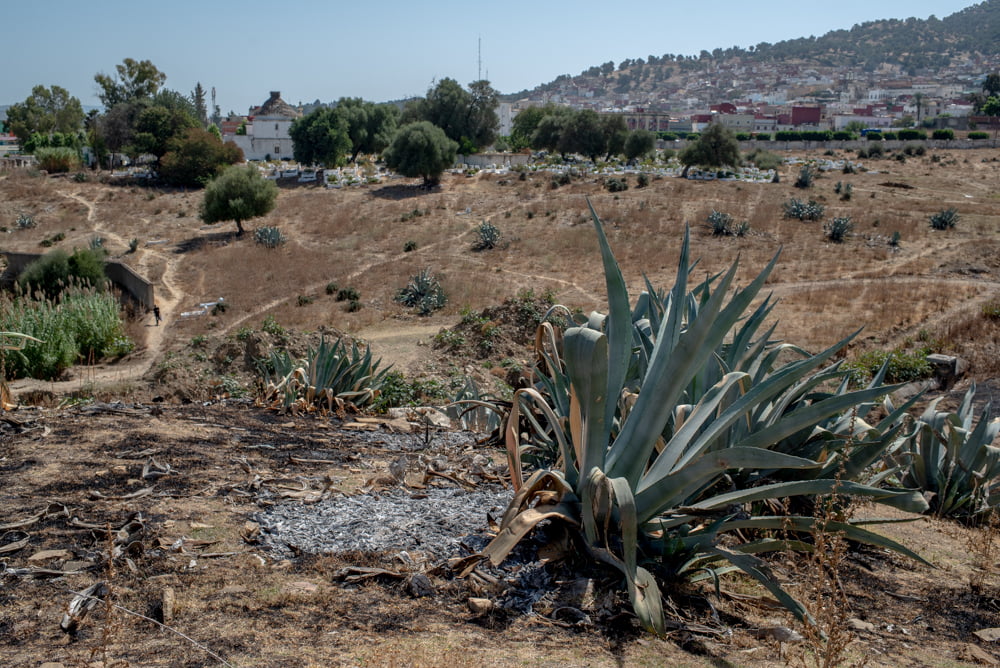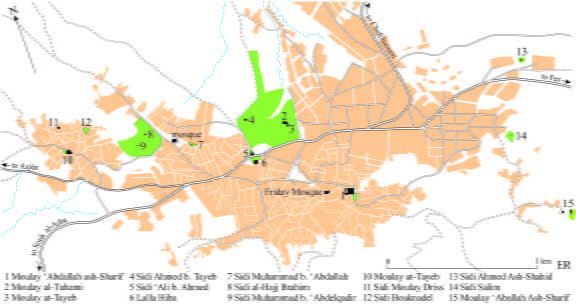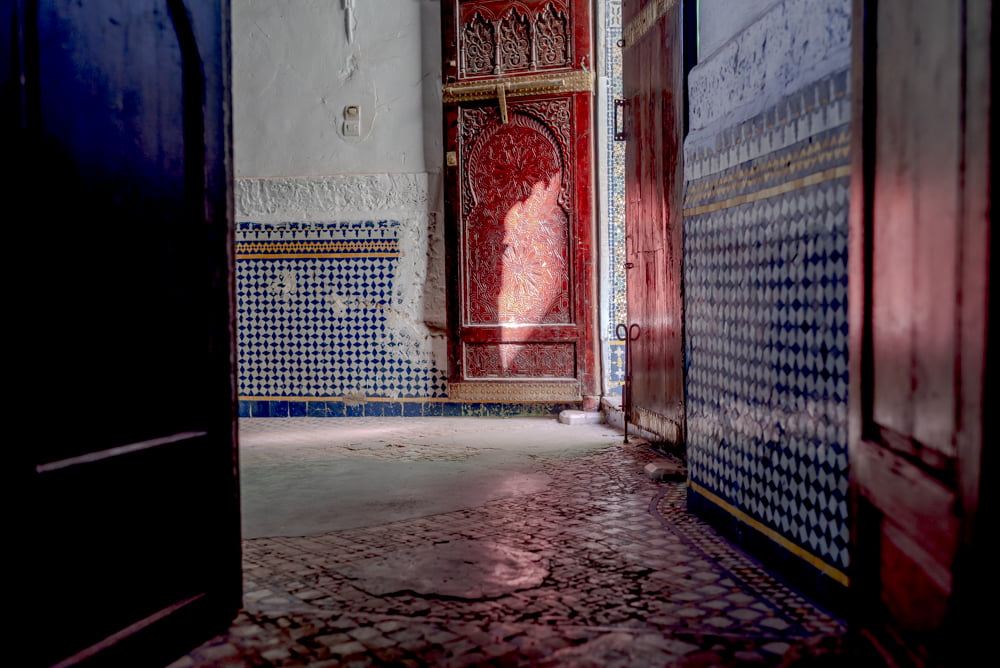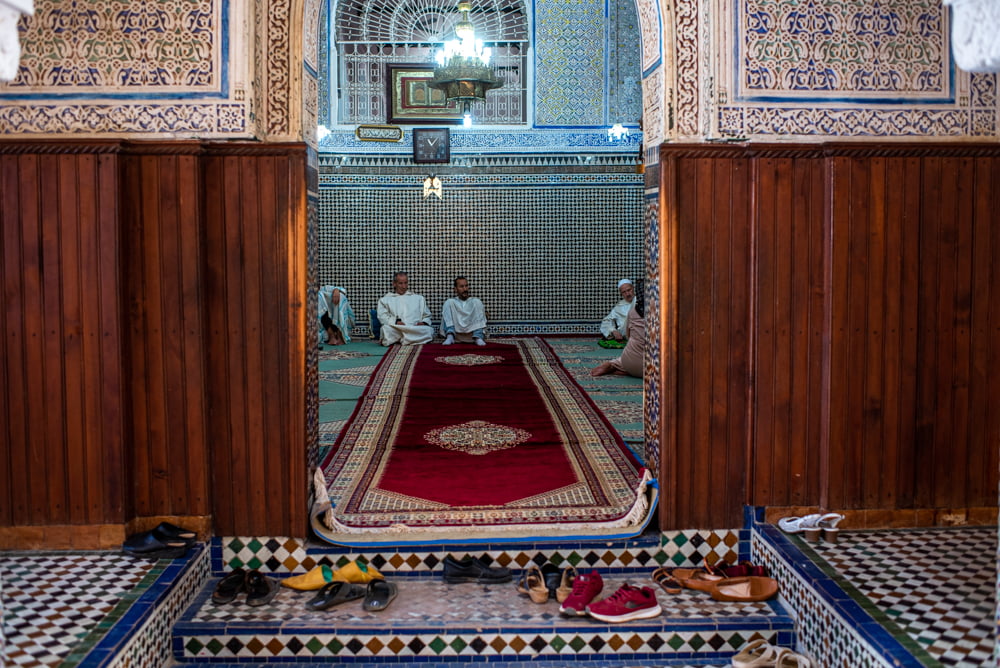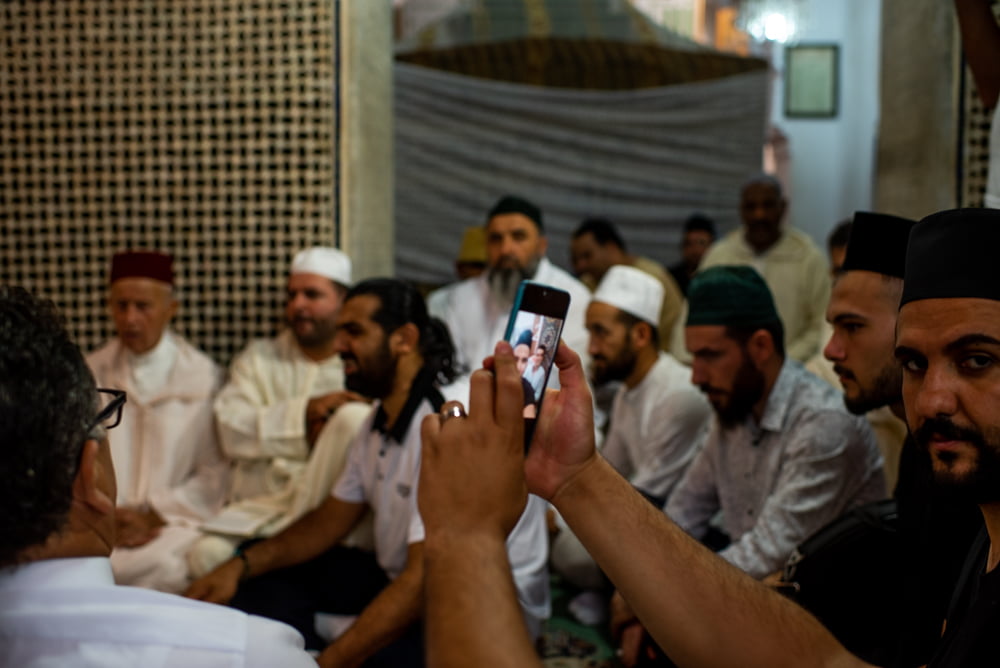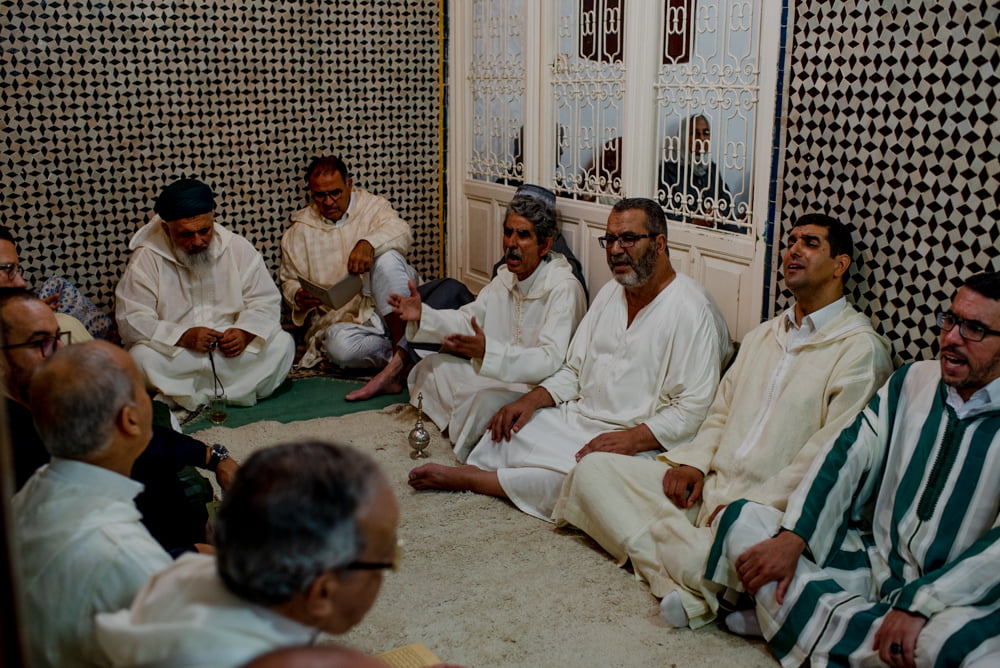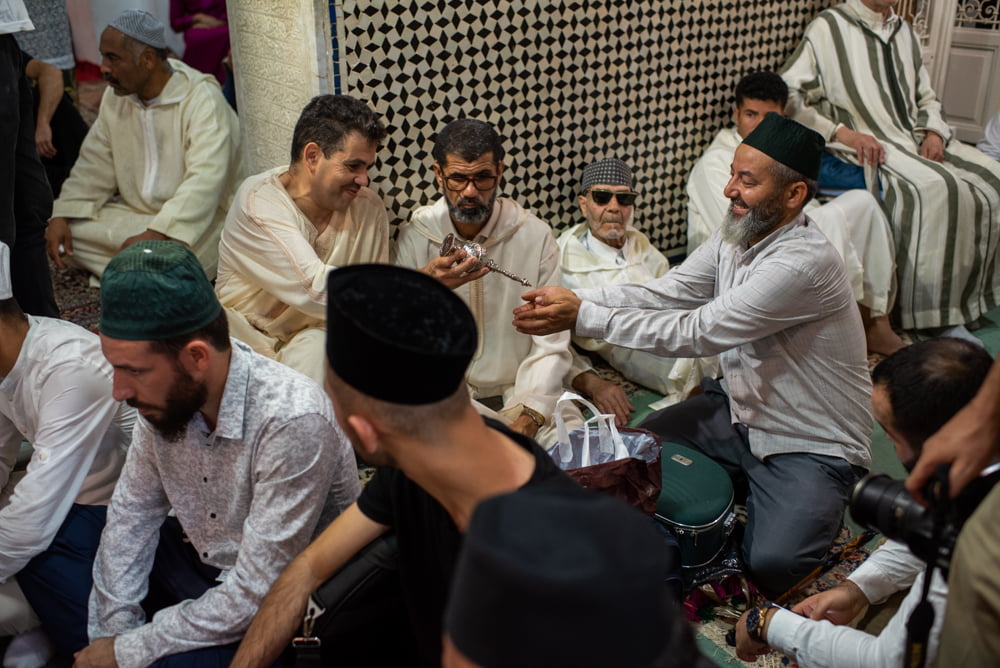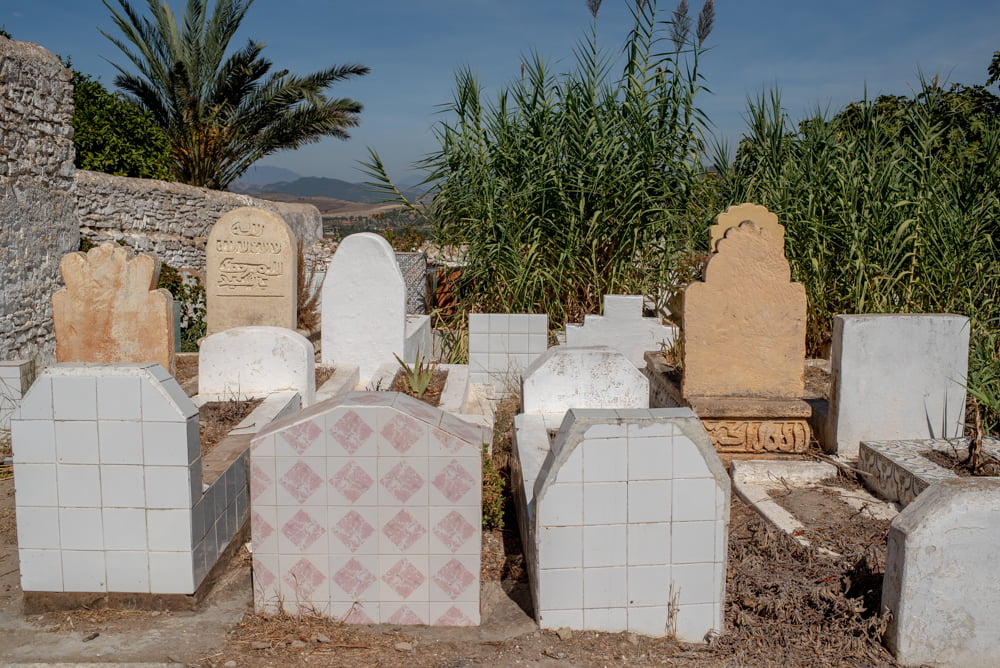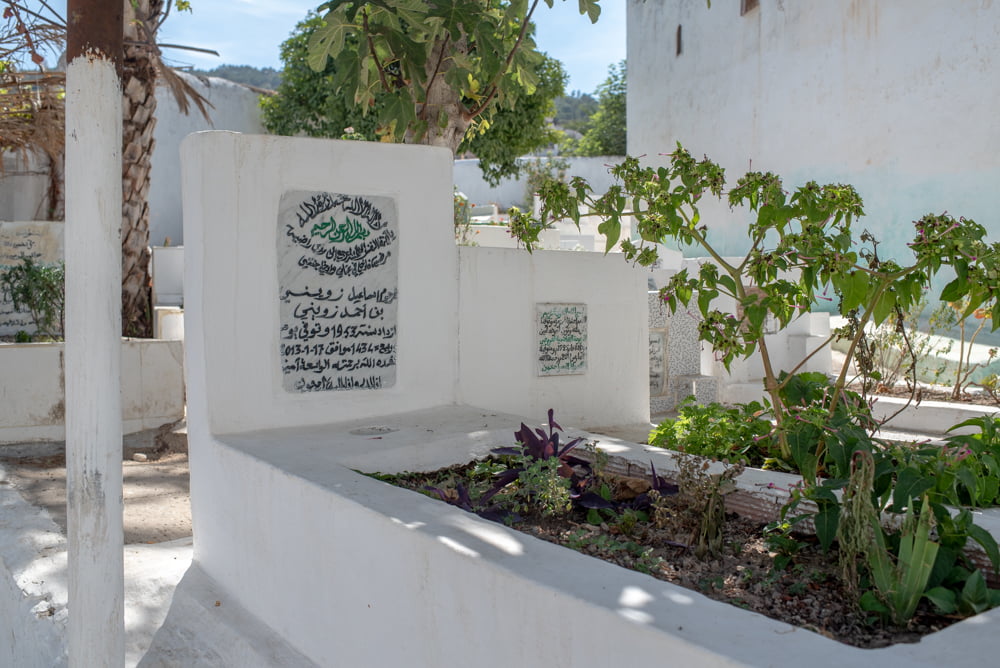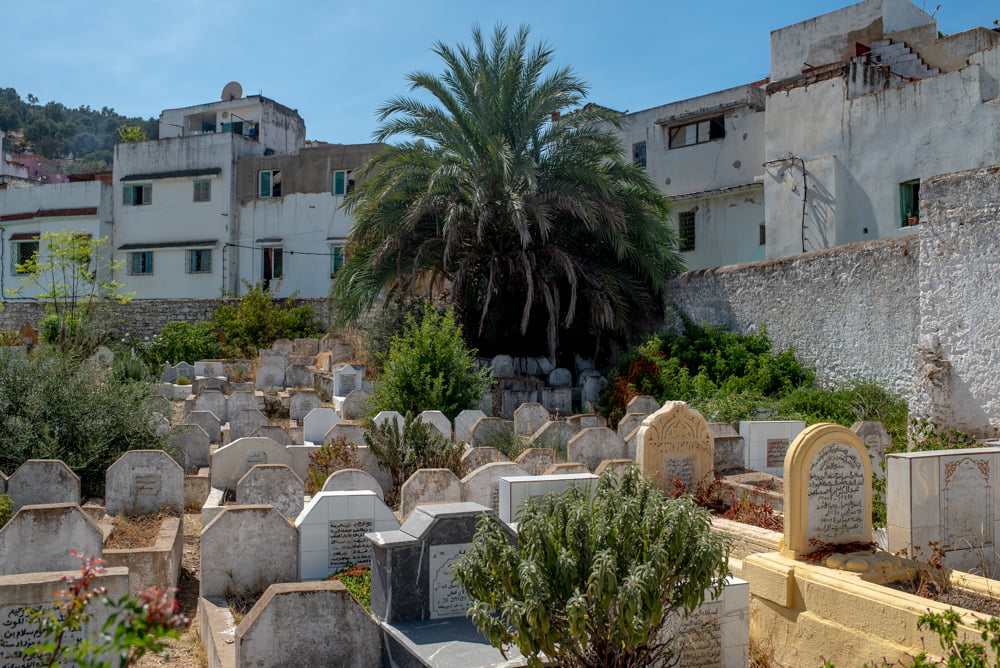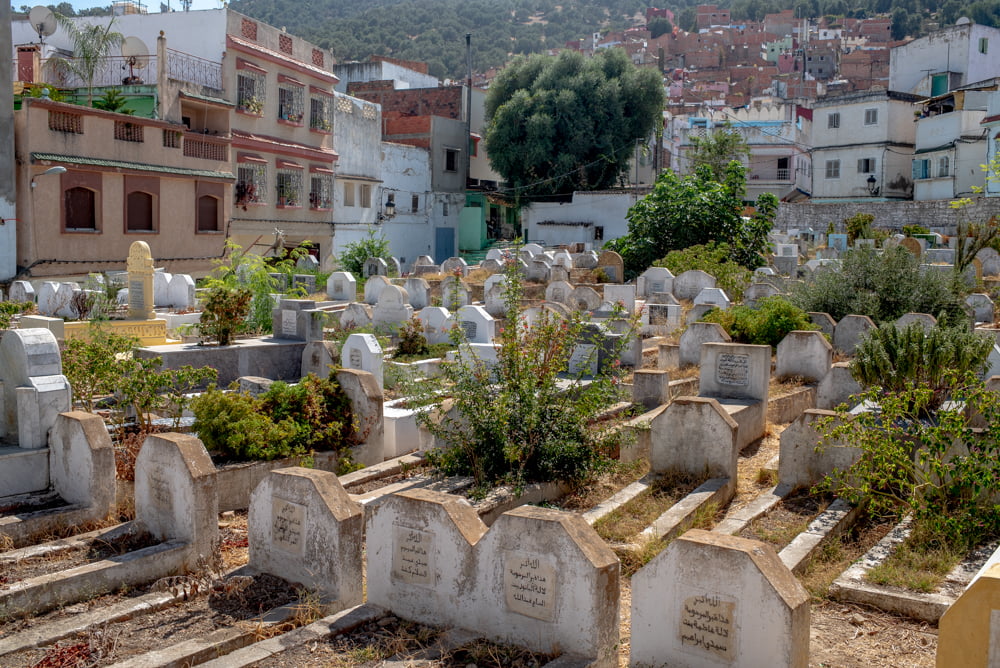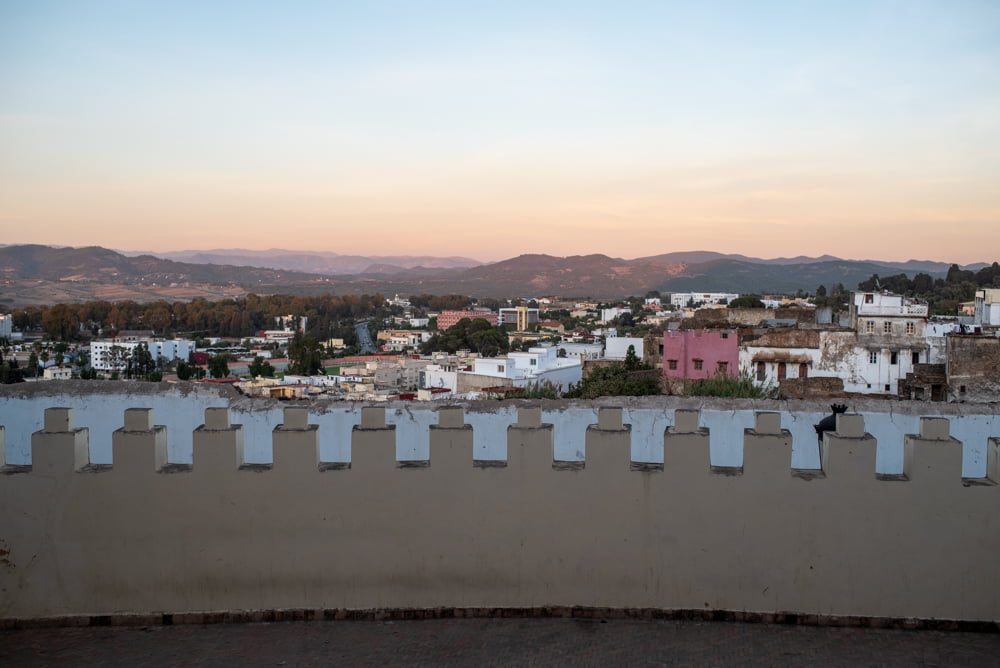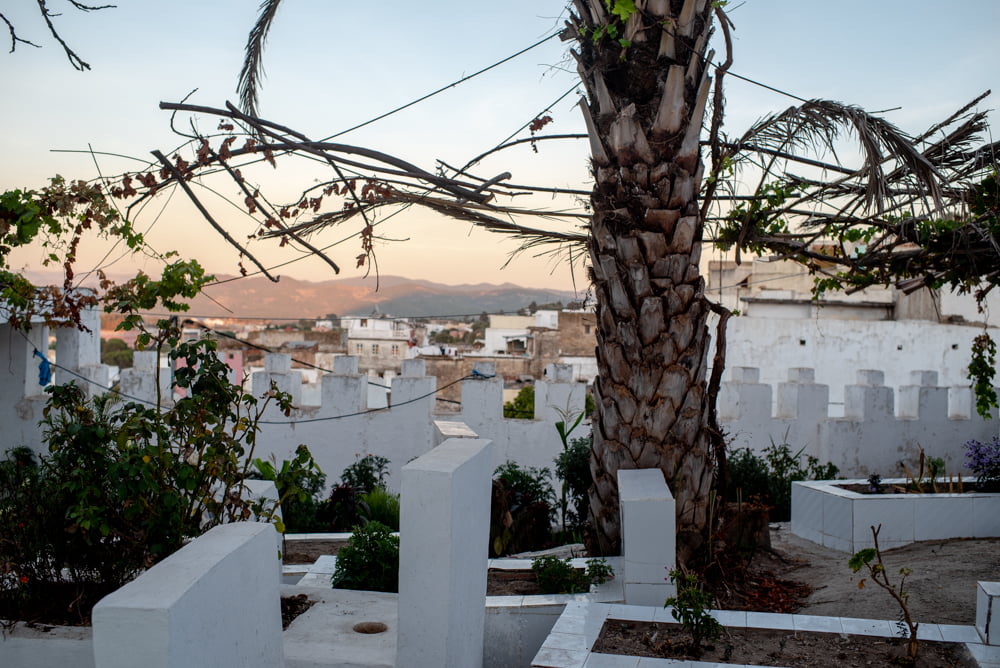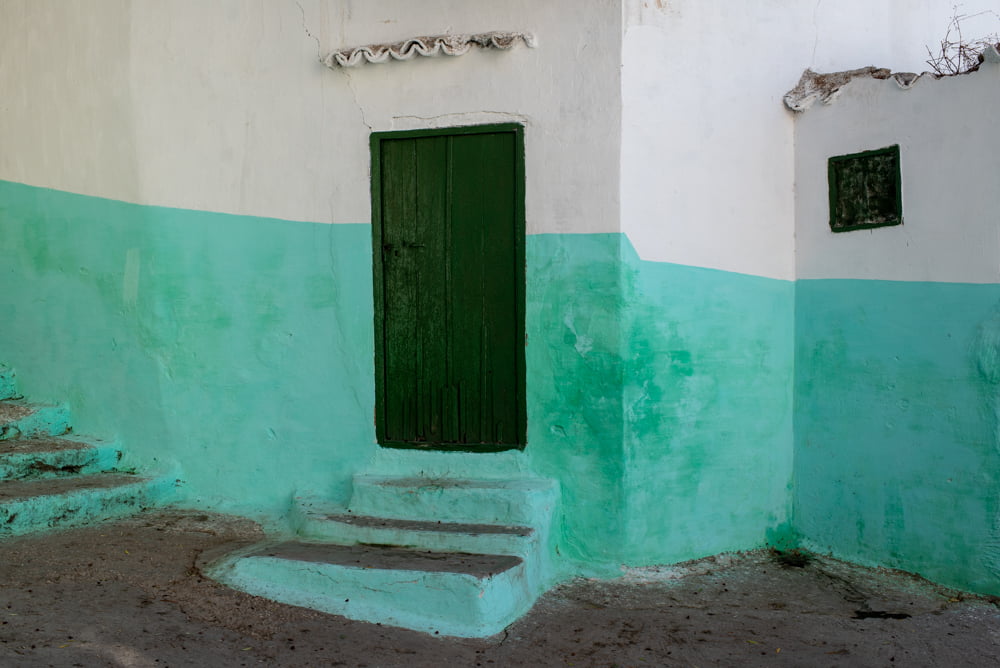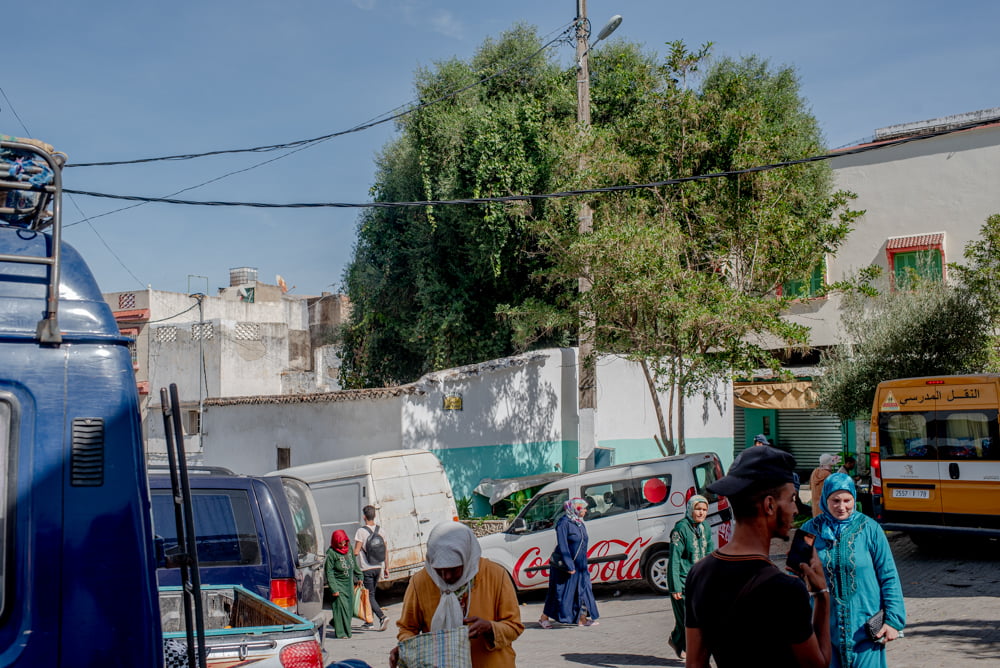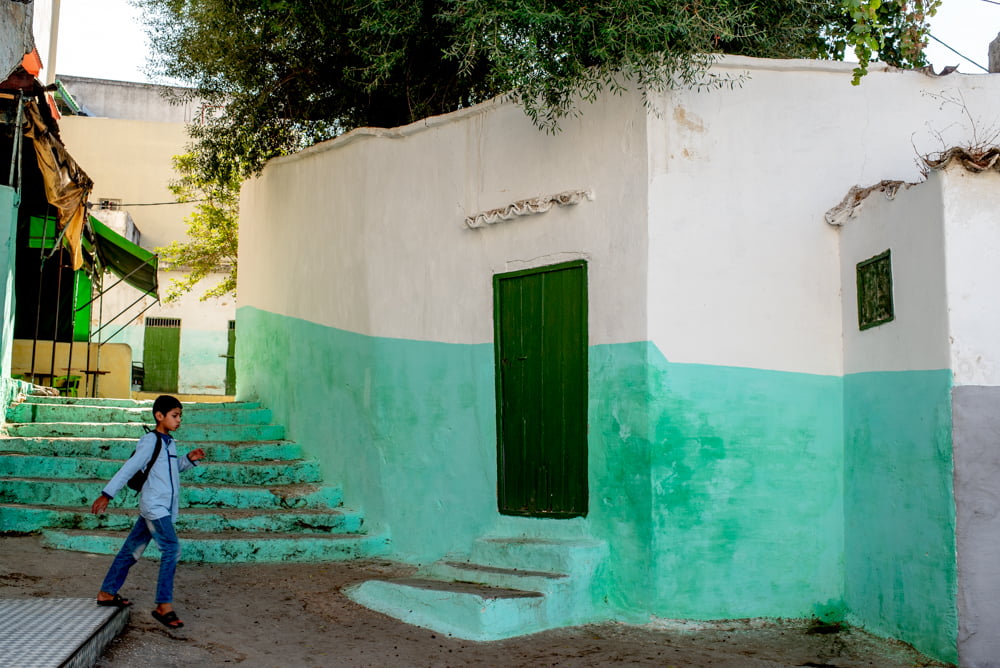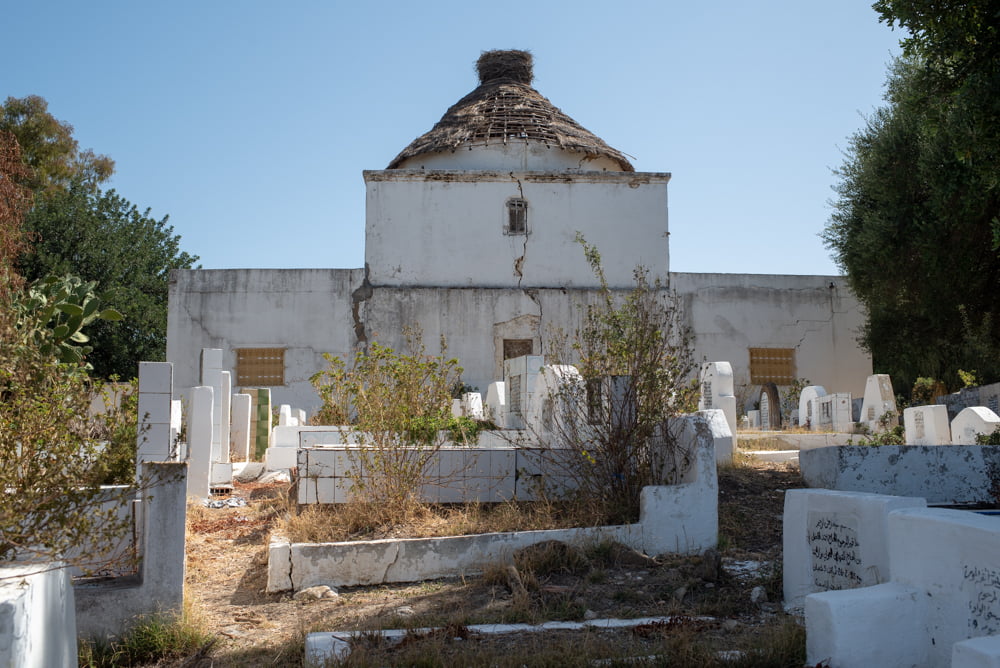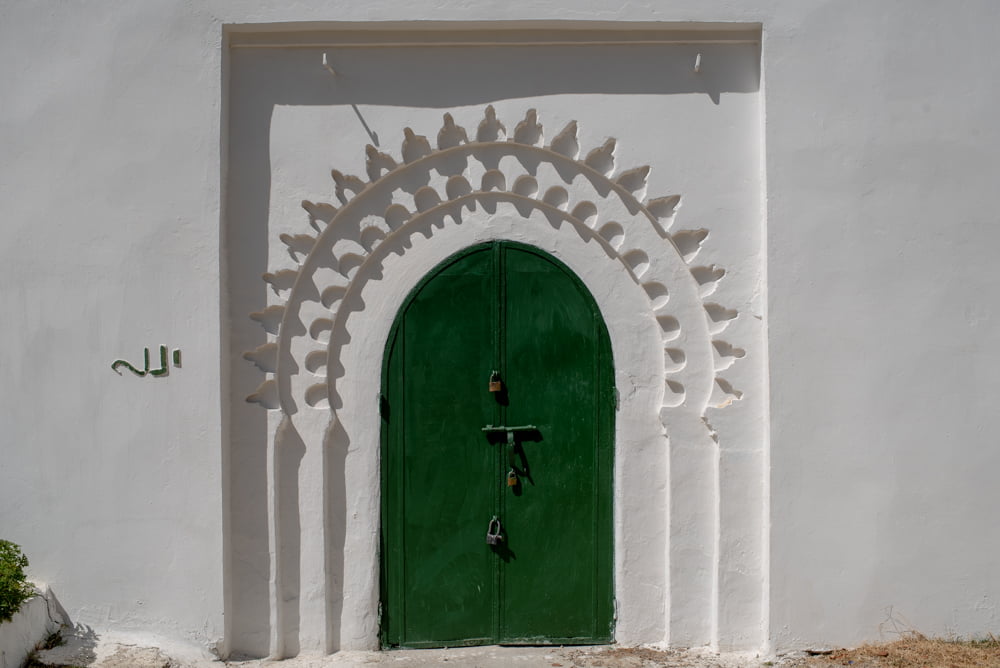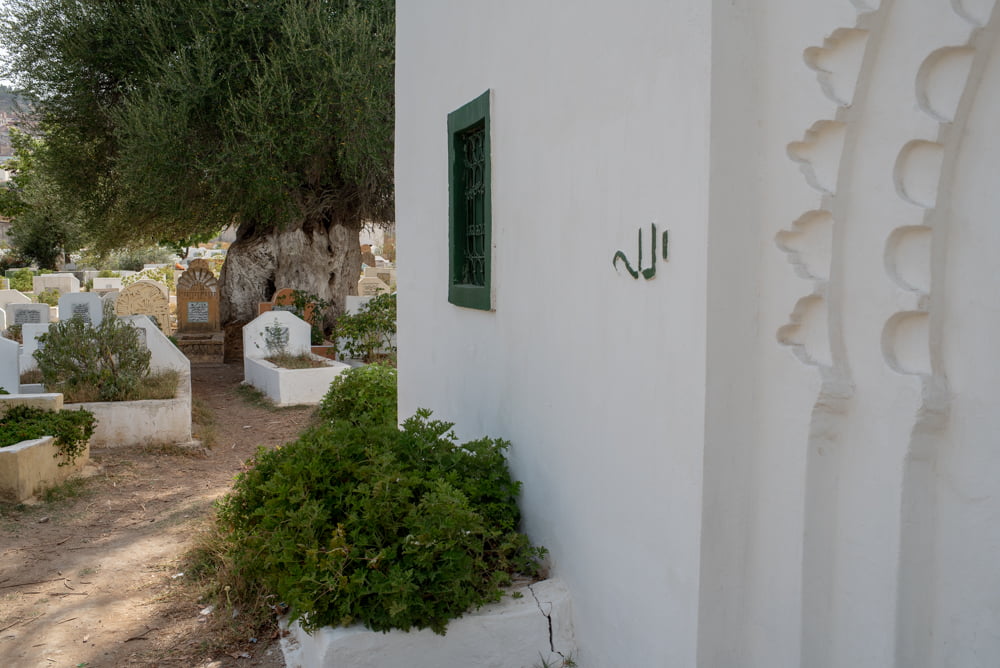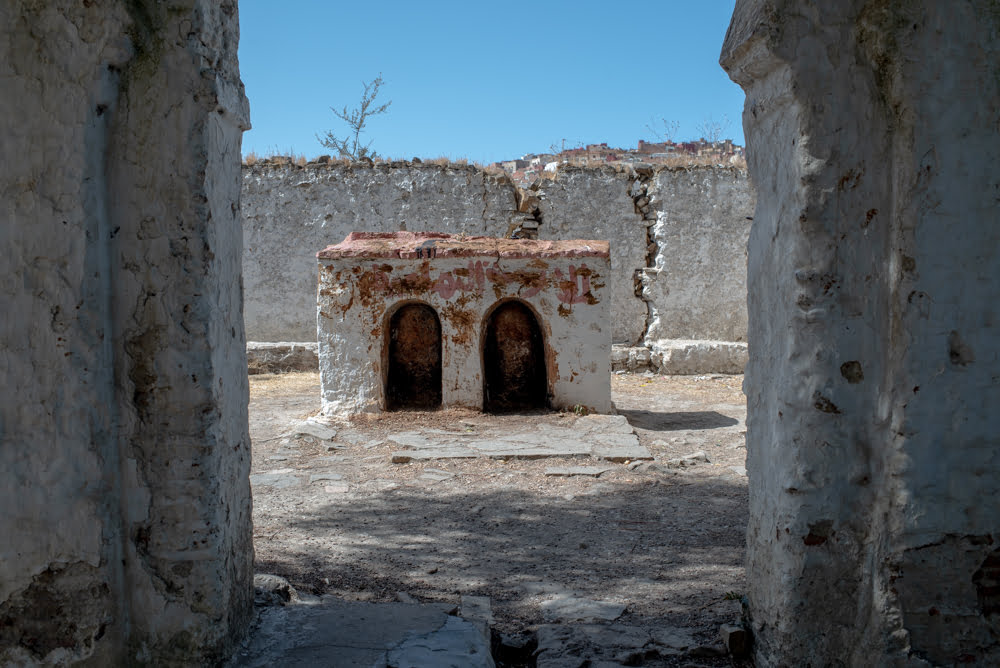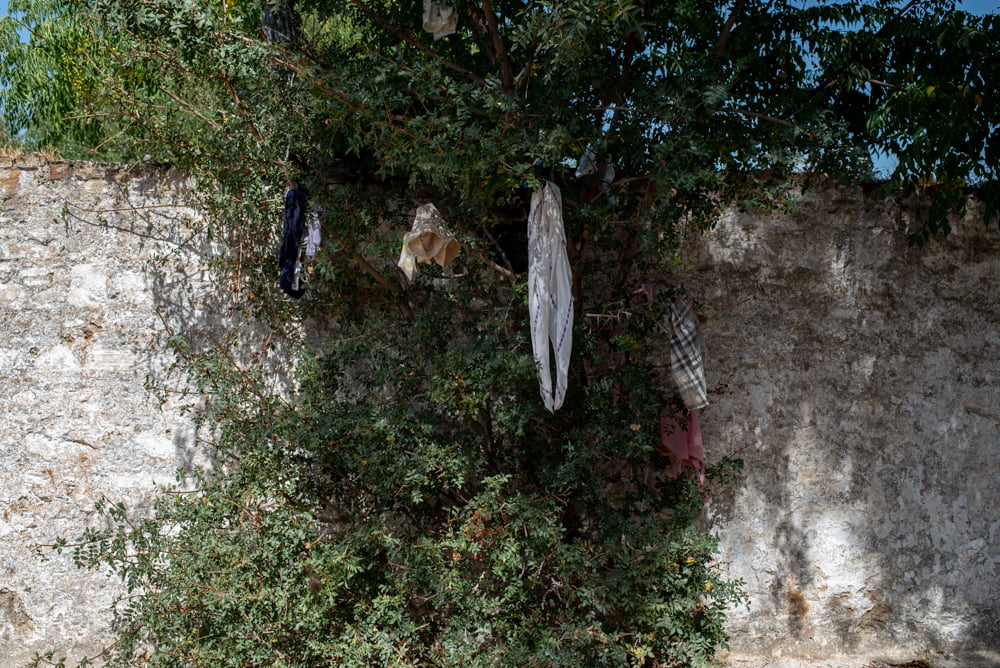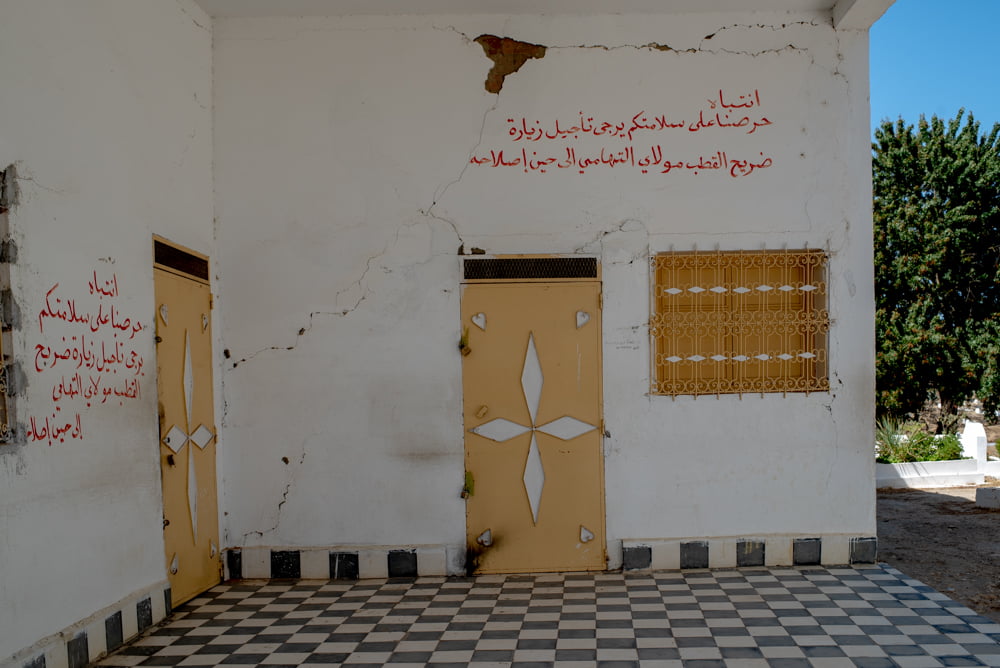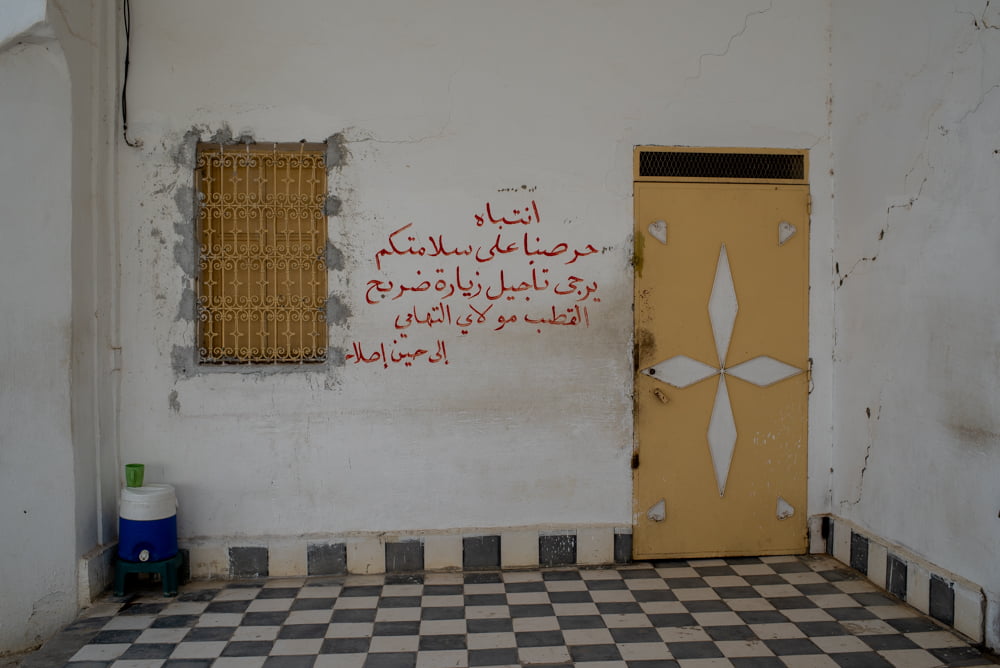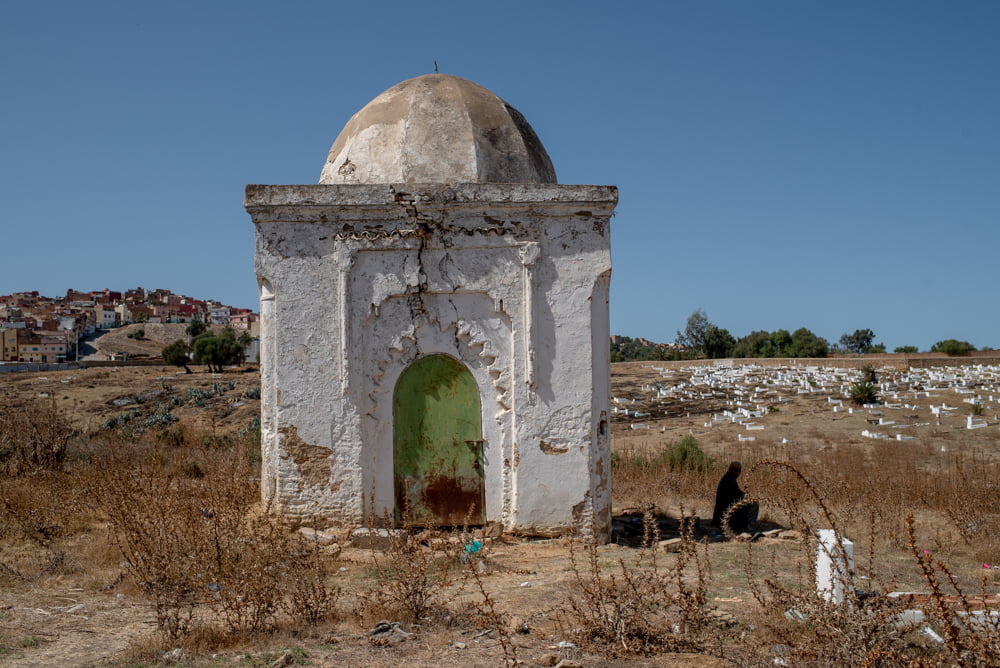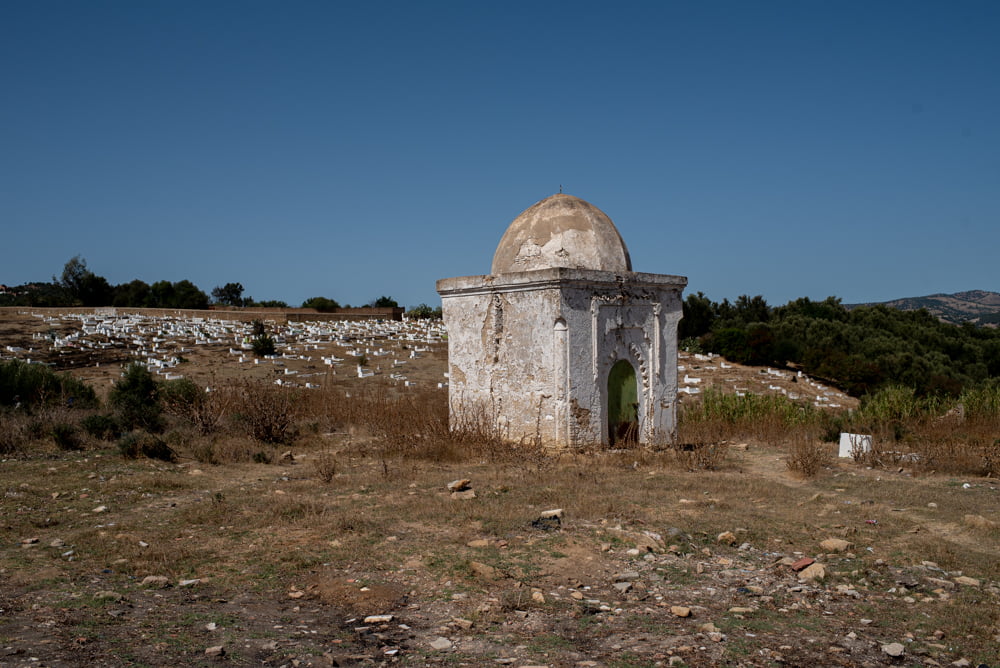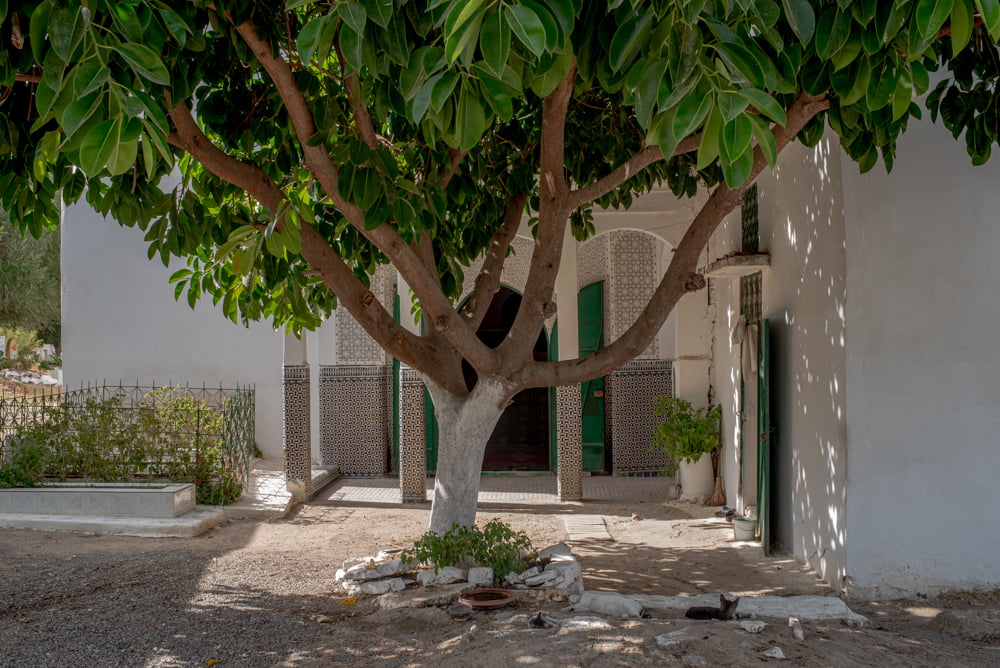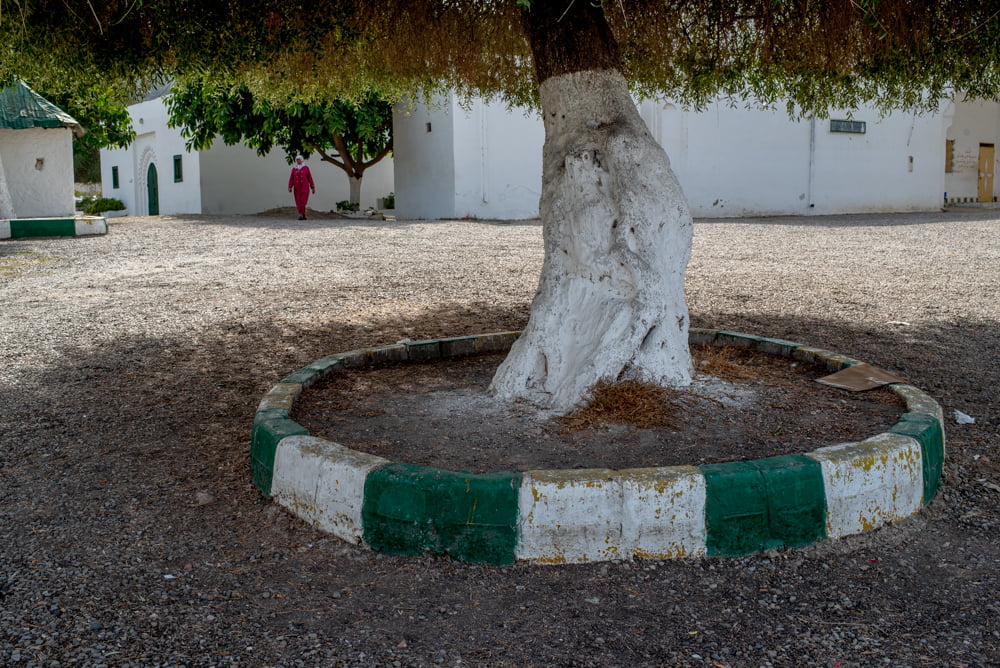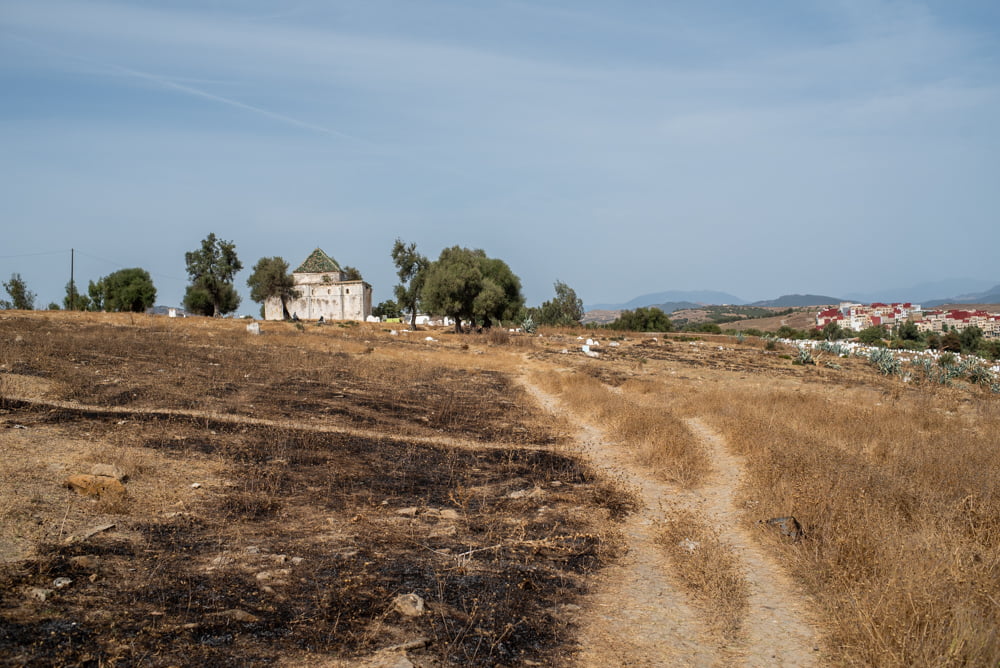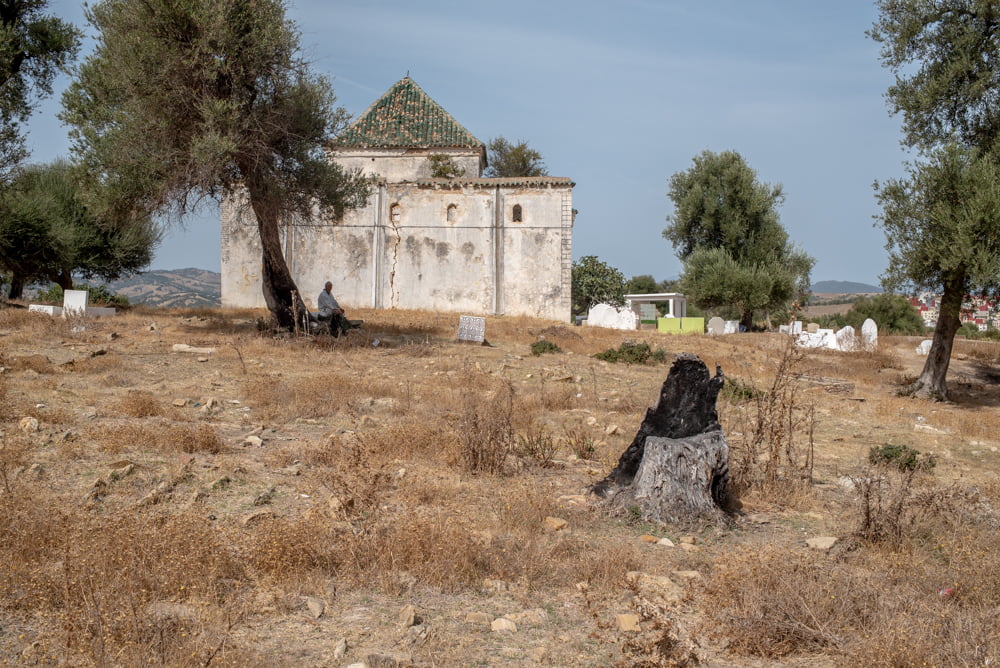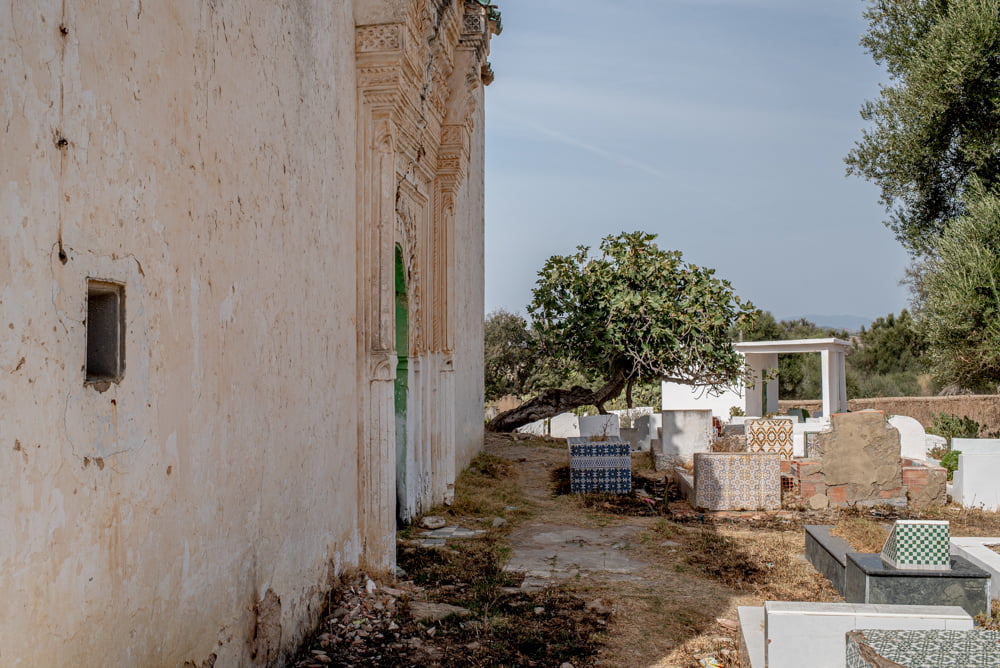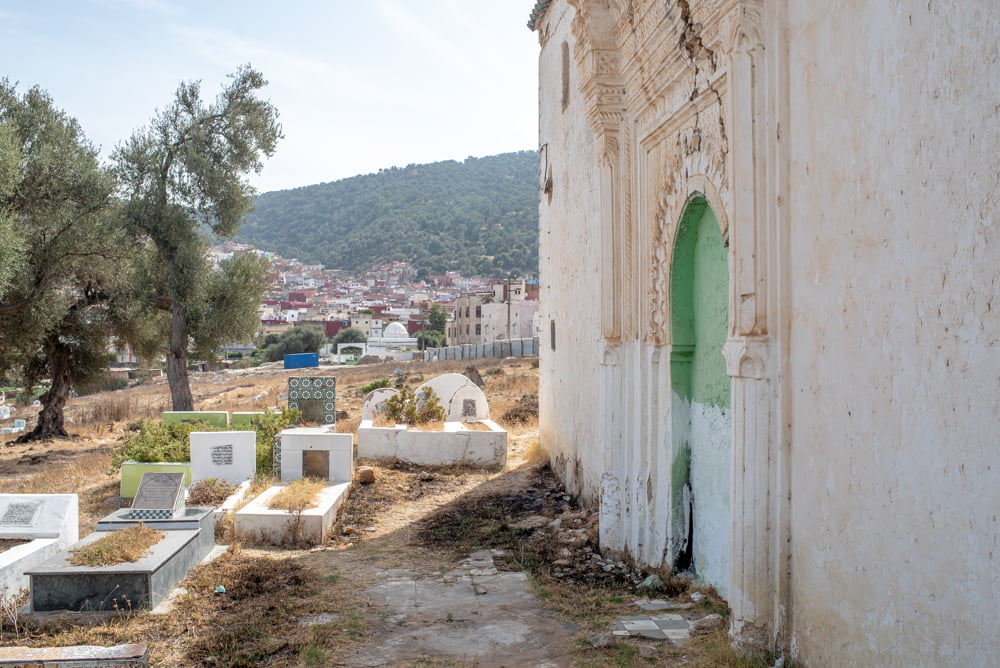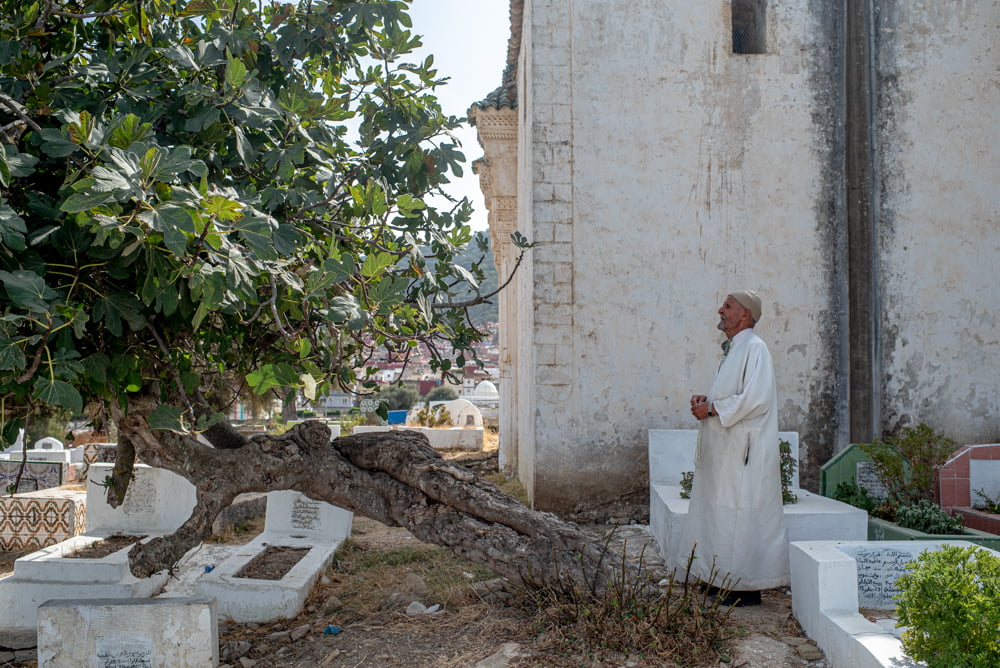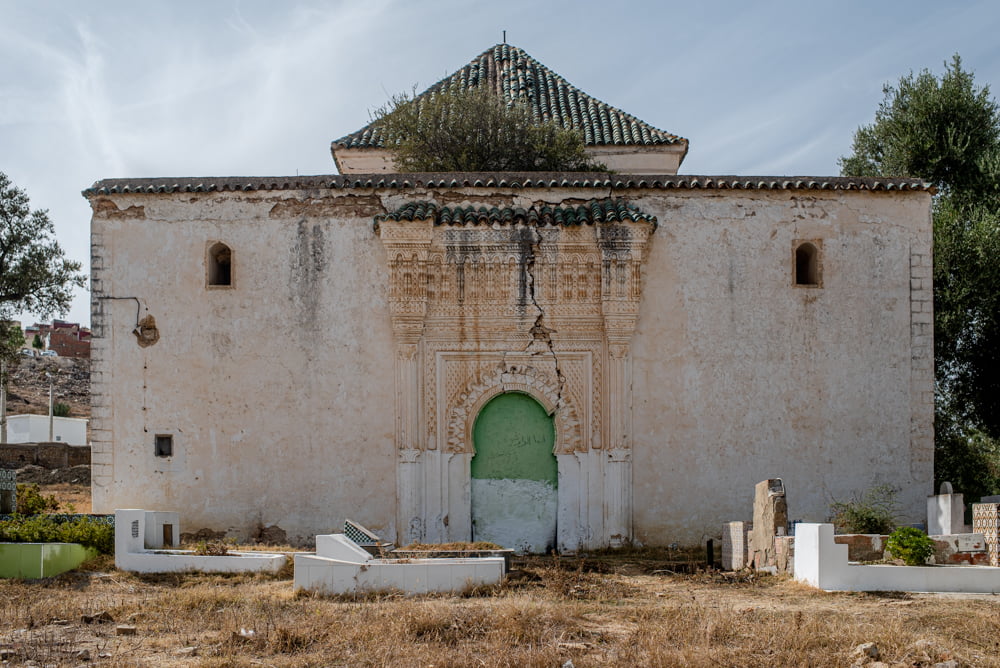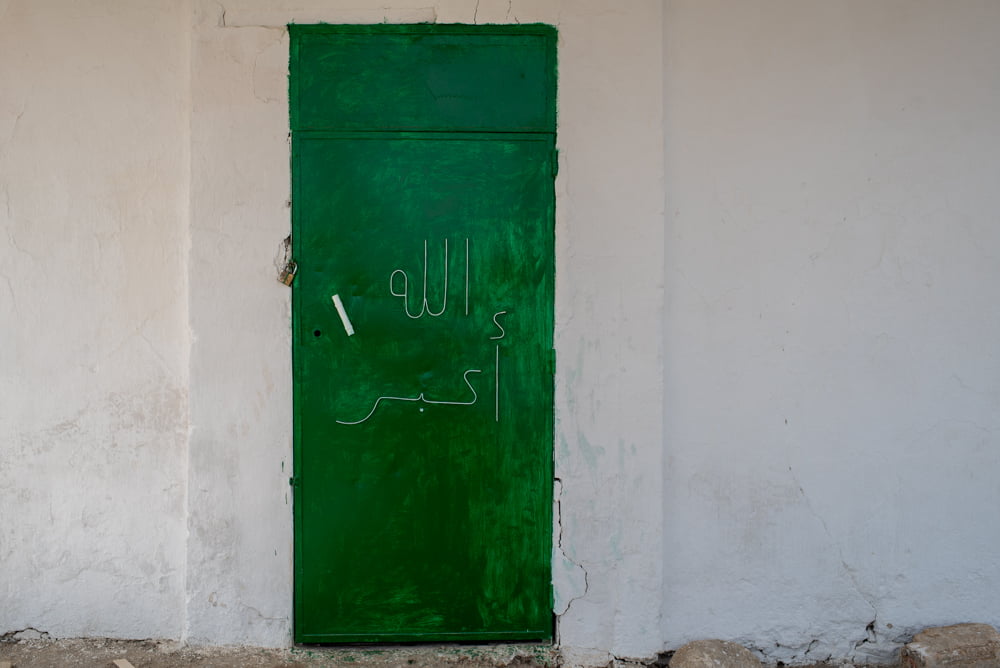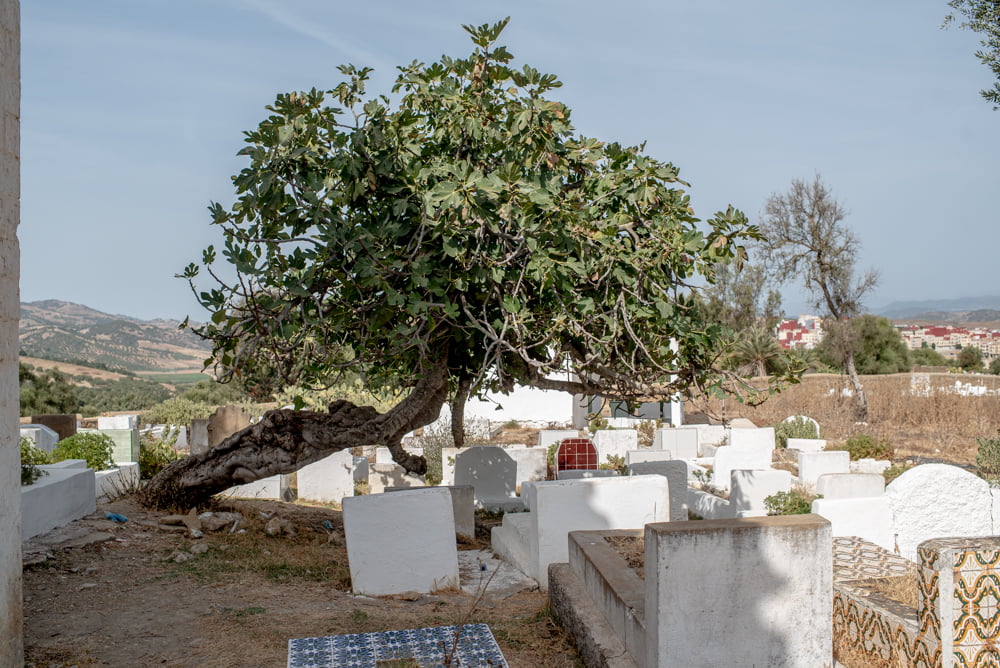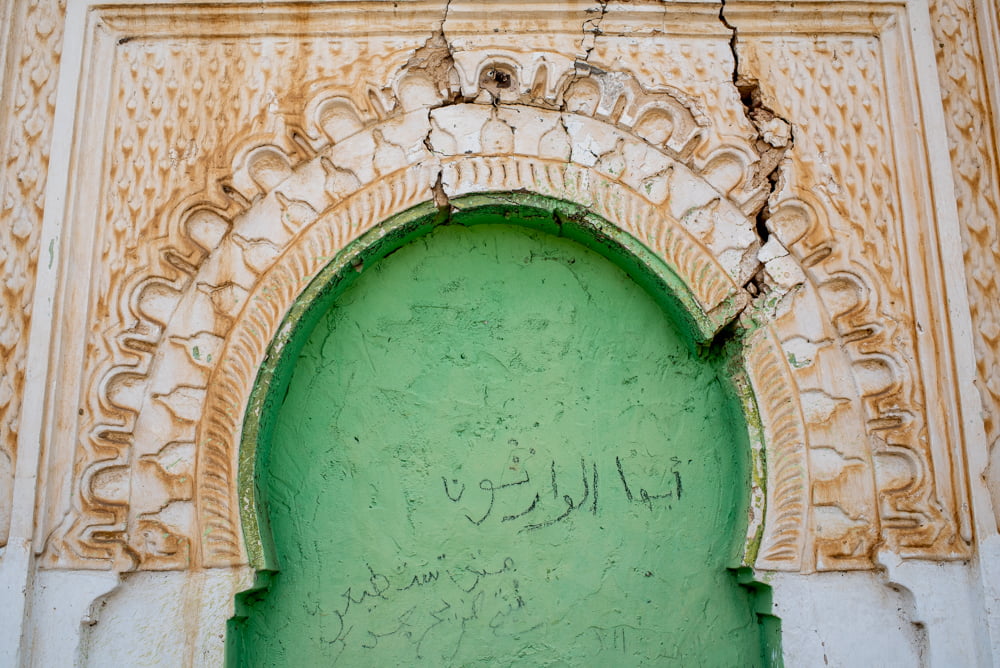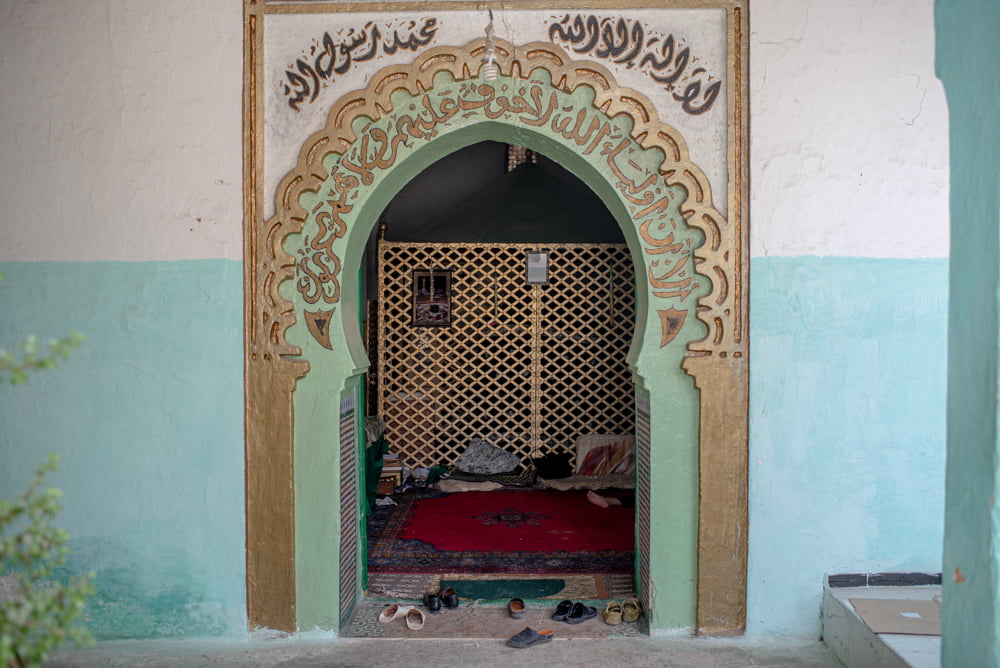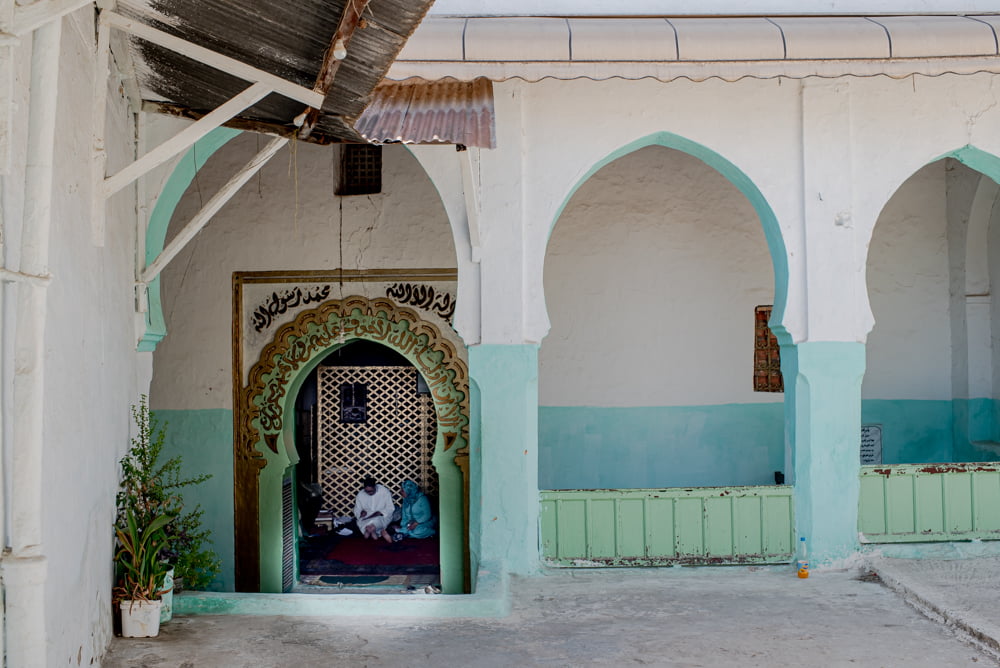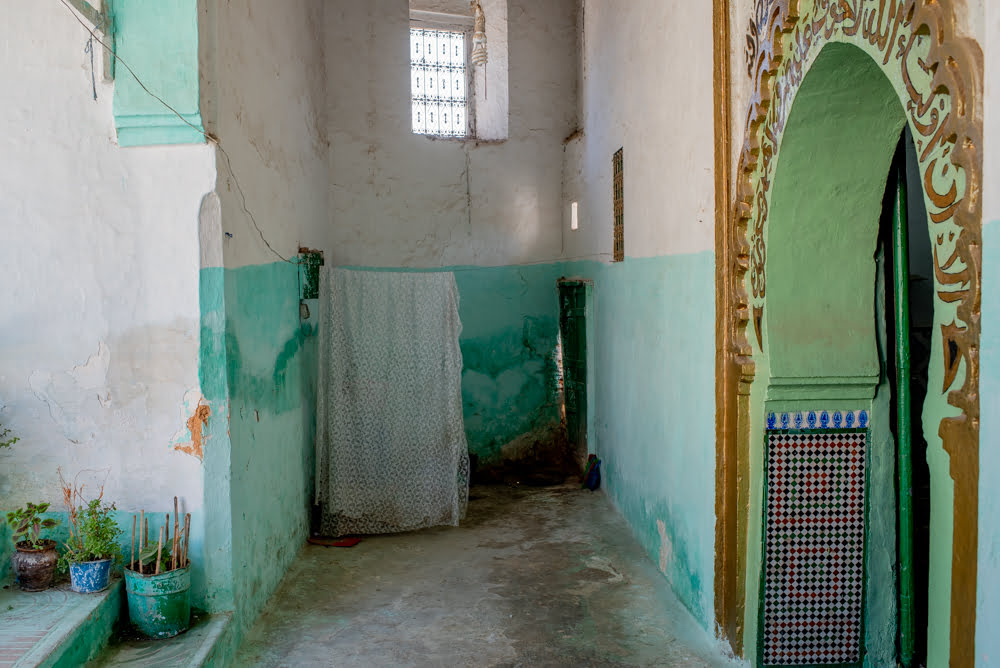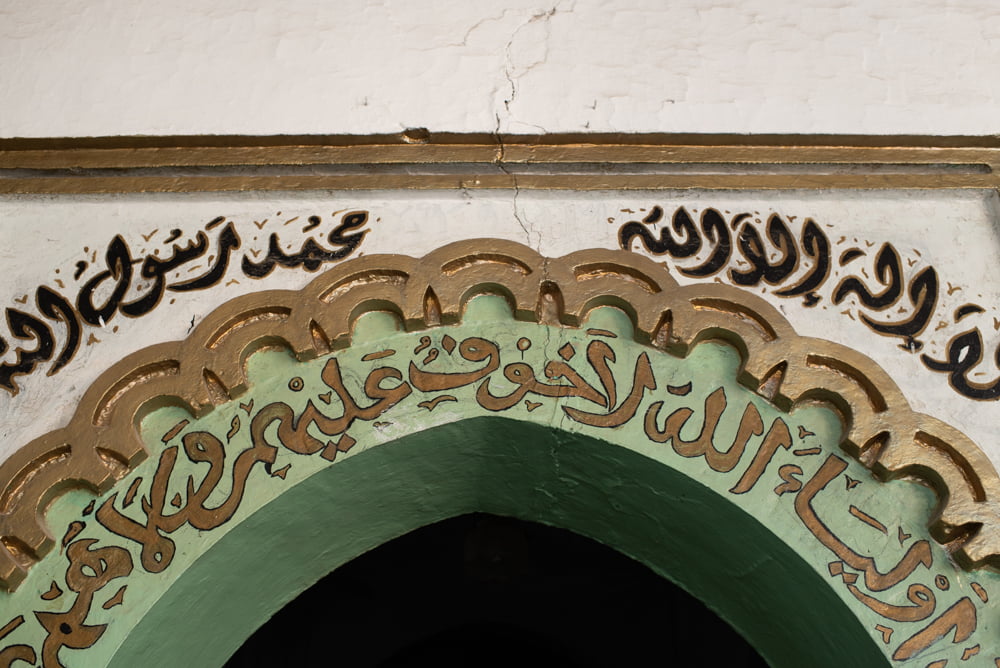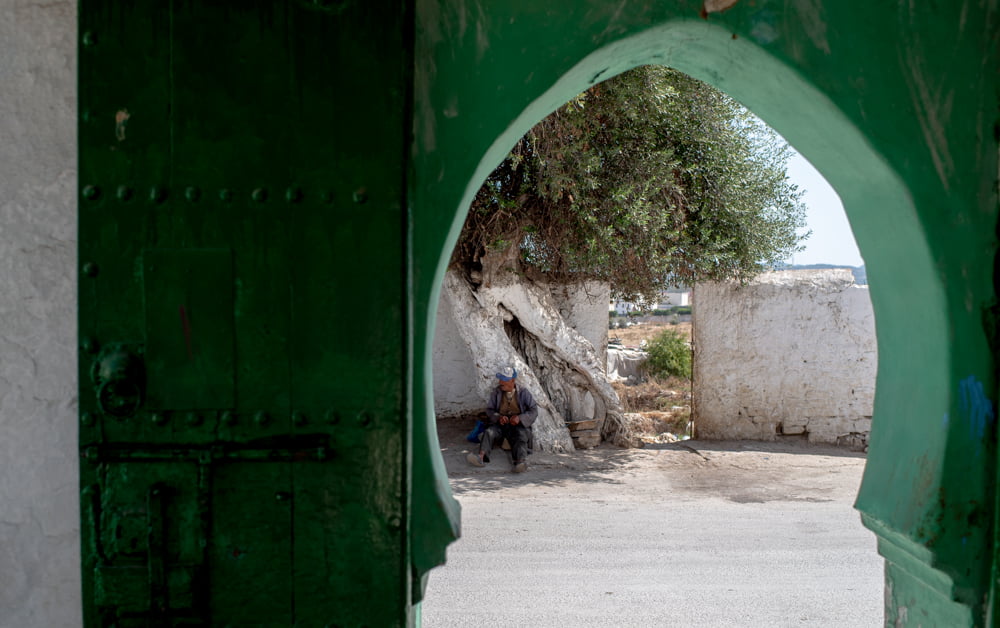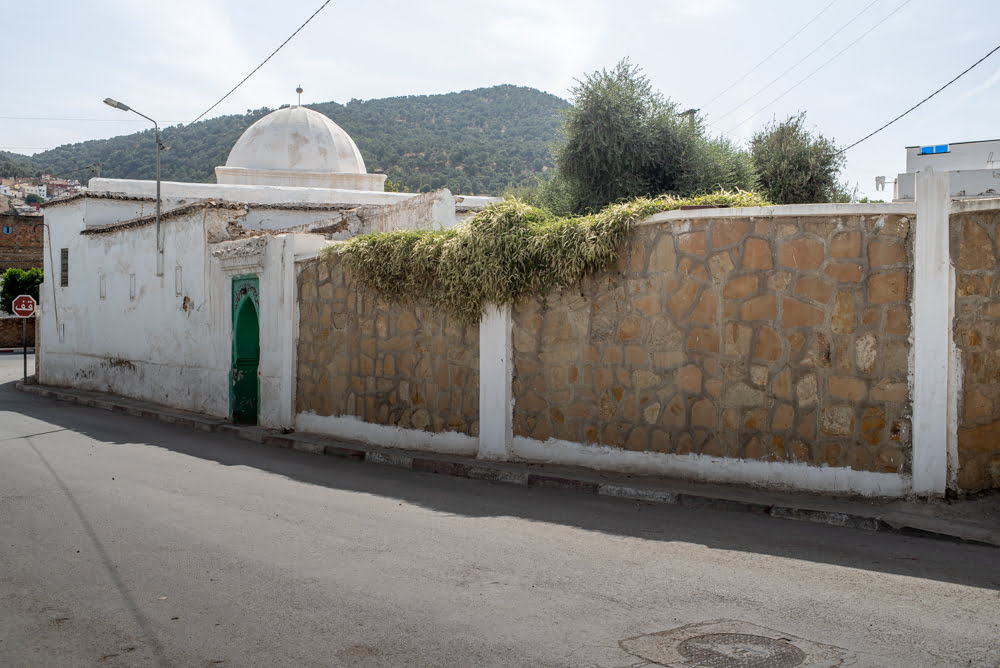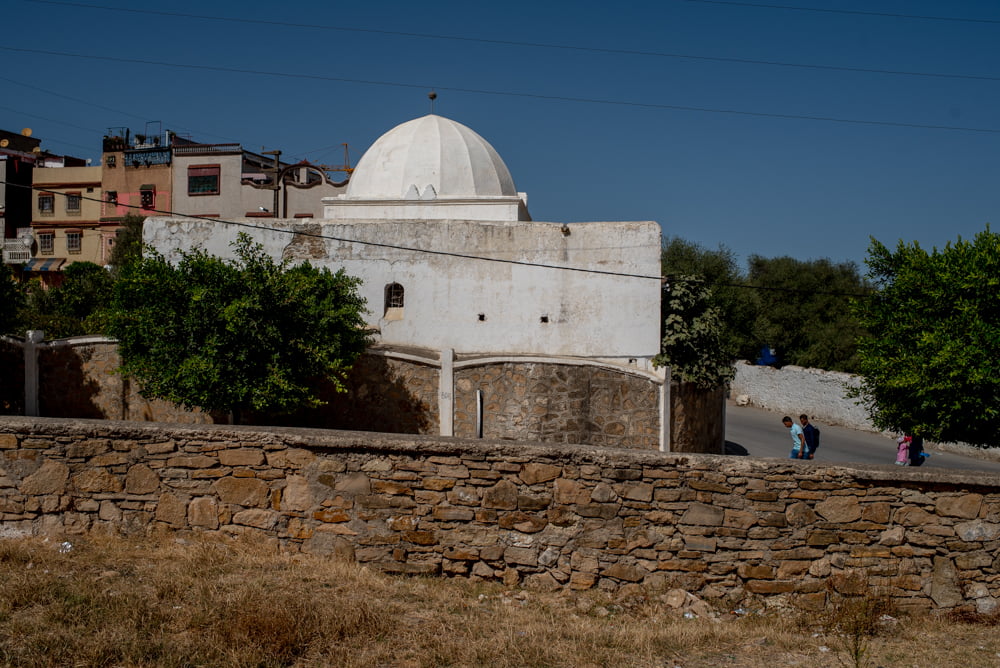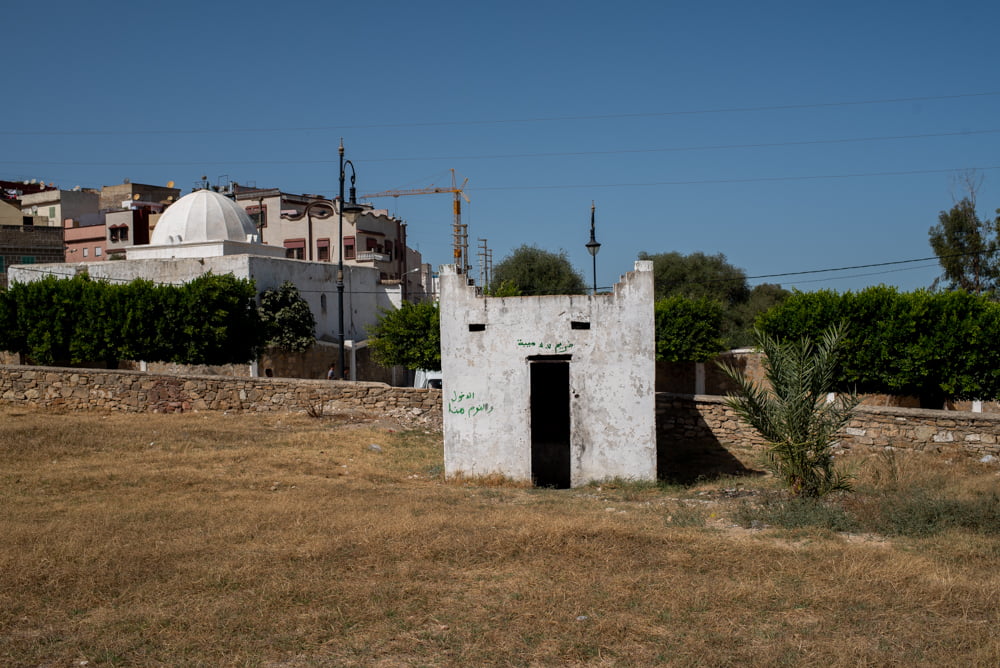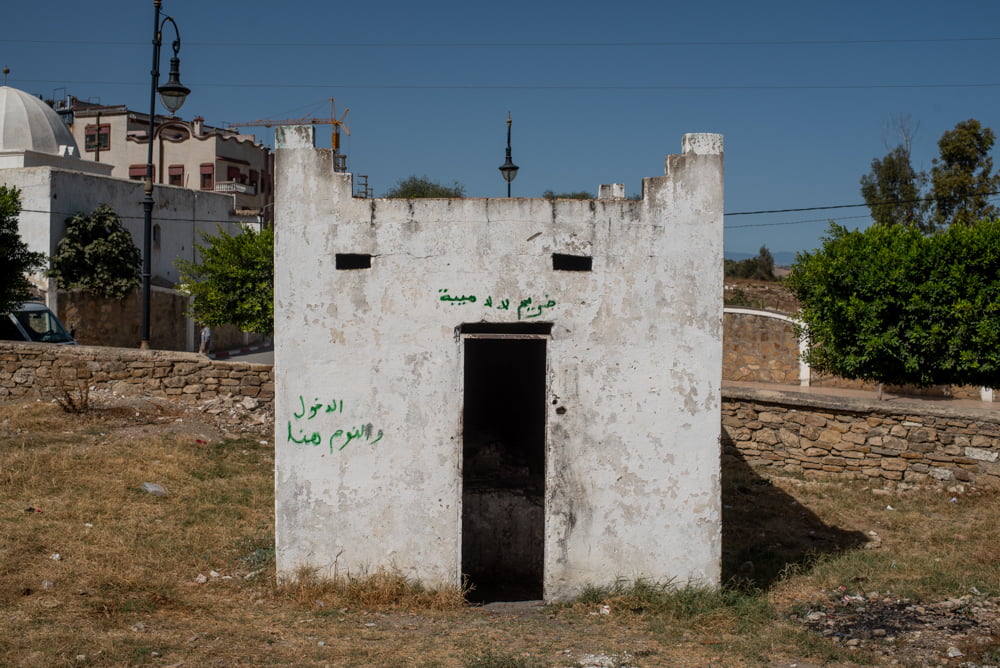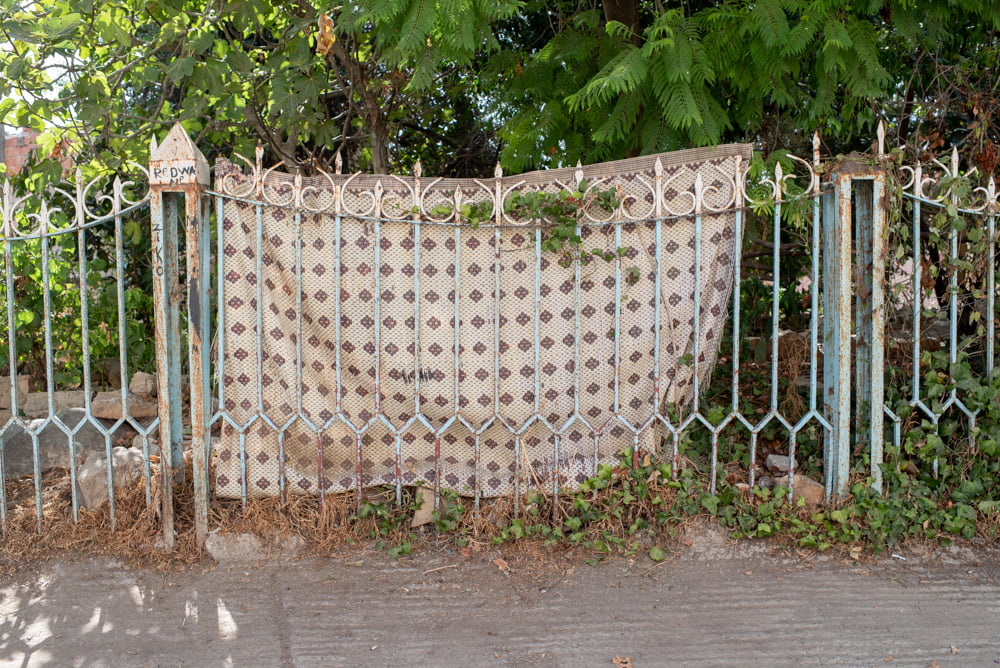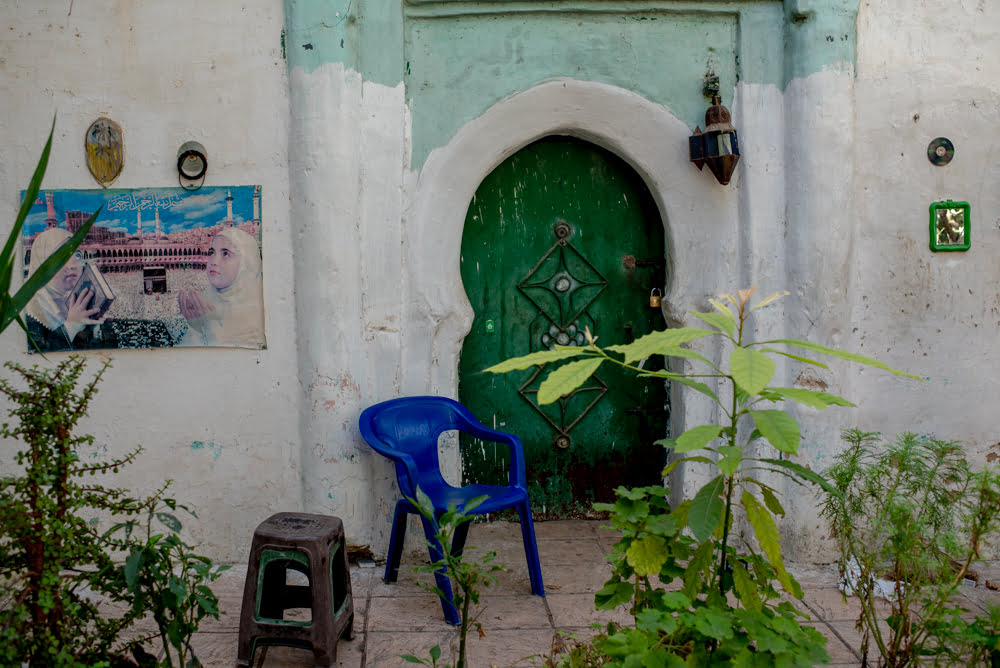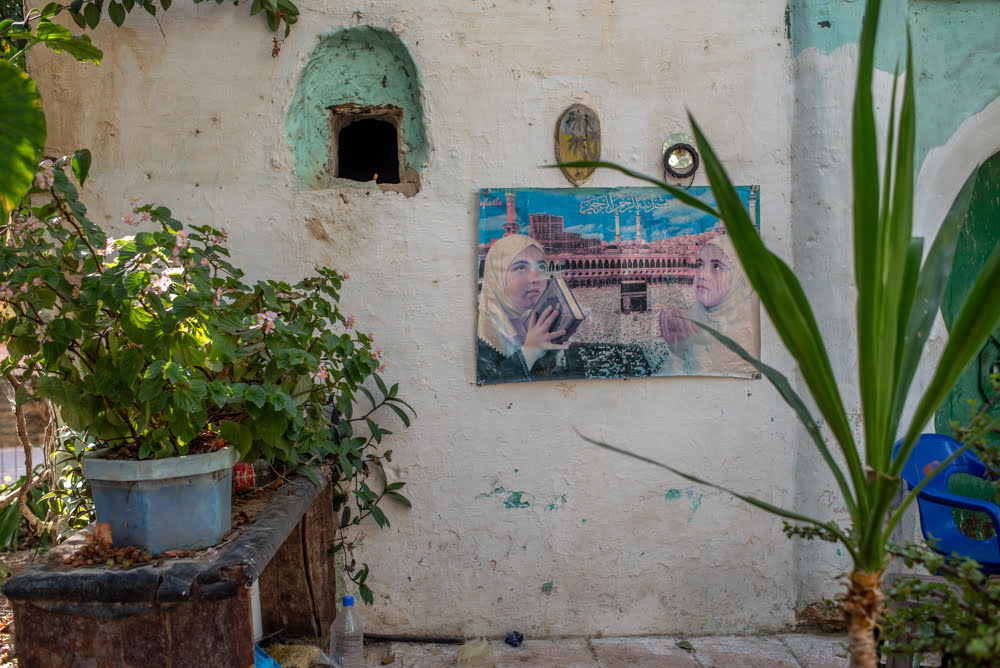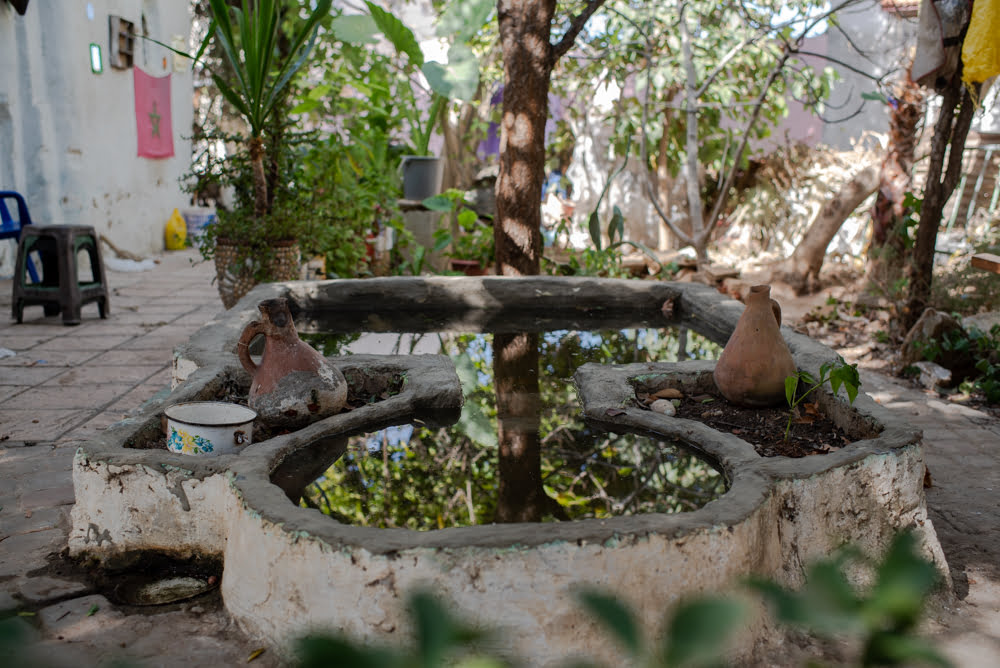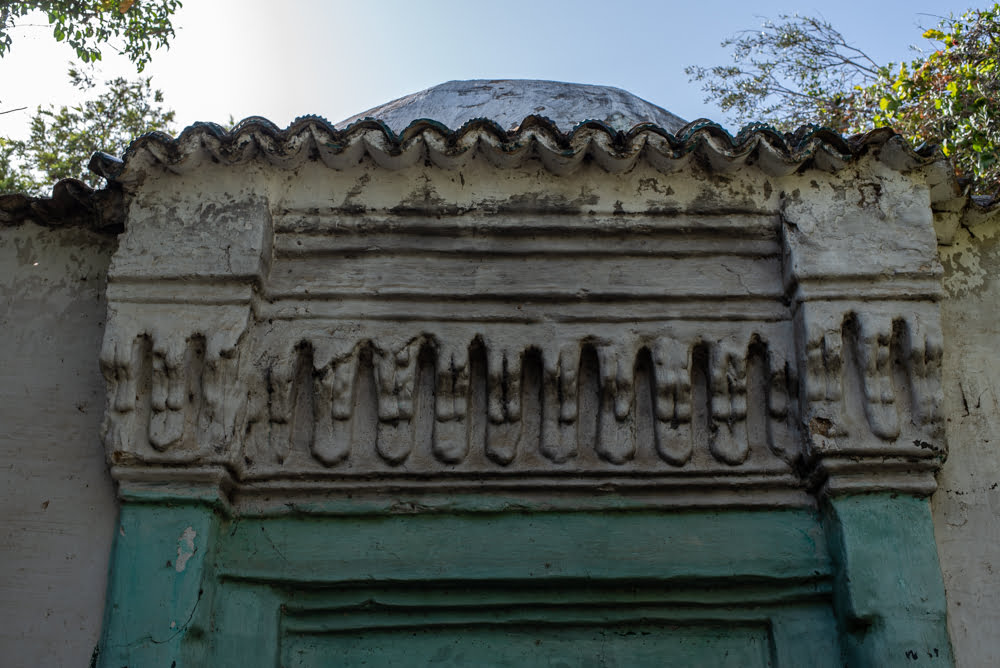Walter Harris, the adventurer and author, in his 19th century travelogue ‘The Land of an African Sultan: Travels in Morocco’, described Ouezzane as “the most fanatical town that Europeans may visit”. Things may have become less frenetic since his comments, though there is no doubting the Sufi heritage and spiritual sufferance that continues to exist there.
Sufism is a form of mystical and aesthetic Islam, where adherents strive to become close to god through a series of rituals, practices and experiences which slightly differ according to the brotherhood or Sufi order belonged to. It is considered to encourage a more personalised and intimate relationship with Allah. Some brotherhoods have a traditional healing role. The Sharifs of Ouezzane are one of the most prestigious and influential of all the brotherhoods; they are considered direct descendants of Mohamed. The town, its many saints and shrines, has long been one of the most important centres of pilgrimage in Morocco both for Muslims and for Jews.
Home to the Wazzâniyyah order, it owes its emergence as an urban and spiritual centre to Moulay ‘Abdallah al-Sharif (1596-1678). Moulay ‘Abdallah belonged to Morocco’s most distinguished mystic lineage, the Idrissids, descendants of Moulay Idris I, founder of the first Muslim dynasty. The Wazzâniyyah has zaouias all over Morocco. The “mother” zaouia is in Ouezzane town, which occupies the northern slope of Jabal Bouhlal. Ouezzane is also known for the “forty-four saints” buried there.
My intention was to try to document these shrines by taking photographs.
To assist me I have borrowed hugely from the works of Professor Eric Ross for both this article and his map showing the location of the shrines from his website. Without this assistance it would have been much harder and I doubt I would have found less than half of the zaouias. His website, and my observations, suggests there are even more shrines to be found and recorded than the 15 he documents.
I was successful in finding 14 of the shrines; the final shrine eluded me for some reason. It was late in the day and the person who was kindly offering to help me search was unfortunately not straightforward and we had some differences. Getting around Ouezzane on foot was not too difficult, the town is not large, though the shrines most difficult to locate were those unsurprisingly at the edges of the town.
Shrine number 1 was in the medina and not difficult to find. Shrine numbers 2 and 3 are together at one larger site and directly face number 4 across Cimetiere Moulay Thami, a large, old cemetery adjacent to the bus and grand taxi park. As well numbers 2 and 3 being together, at least a further 5 shrines exist on this extensive site, and possibly several more. The photograph heading this blog posting of a tree with the bark painted white is of the entrance to this large complex from the road. A large number of both men and women congregated within this site and although welcoming me were also mistrustful of me. My photography was frowned upon. Shrines number 5and 6 completed the shrines in the town centre; the others were further afield, several at the margins of the town and butting against countryside.
It has been difficult finding out information about the saints; searching in English has its limitations, and unlike the 7 Saints of Marrakesh whose shrines are well documented there appears little online about either the Ouezzane shrines or their saints. Perhaps this information is documented in Arabic. As I find out more I will update this information including hopefully the years that they lived.
Professor Ross’ map of Ouezzane detailing sites of shrines.
Whilst undertaking this study I have developed a greater understanding the role of trees ( particularly the olive and fig trees ) have within Islamic beliefs. Certainly Professor Ross refers to the presence of large ‘wild’ olive trees in the vicinity of a number of shrines which can themselves act as places of worship, in particular the olive tree which Mr Ross calls the ‘kuttab tree’ ( kuttab was a centre of learning originally attached to a mosque, which taught children and new converts about the Islamic faith ). The small enclosed area around the tree still functions as a Quranic school. The photographs of the tree and the walled enclosure are below.
Many of Ouezzane’s streets and alleys in the medina have been painted green; a reflection of both the spiritual significance of olive trees as well as their commercial value to the town. A later blog post will feature photographs of these painted alleys.
Professor Ross also refers to ‘Dâr Damânah’ ( also spelt Dmana ), translated as the “House of Protection” or “of Security “, a title which refers to the ongoing security of spiritual entitlement of the order, and is recognised across north Africa. This is the home and ‘courtyard garden’ of the Sharif of Ouezzane. It is a large residence in between the zaouia and the nearby beautiful Friday mosque ( the mosque has a unique octagonal minaret ).
Out of curiosity I entered the open door into the inner sanctuary of Dâr Damânah, descended a long staircase and found myself in the courtyard of this residence. I was warmly greeted by the sister of the current Sharif who was very happy for me to explore the courtyard at my leisure and to take photographs. In one of the rooms on 3 sides of the courtyard she also introduced me to a group of distinguished looking men dressed in rich djellabas and extremely smart Moroccan baboushes. She showed me a collection of photographs on the walls above them, and pointed out an old photograph of Moulay Tayeb.
My photographs of the courtyard together with extracts from the book ‘My Life Story, Emily Shareefa of Wazan’, an account by English socialite Emily Keene’s marriage to Hadj Ahmed Ben Abdeslam, the Sharif, in 1873 can be viewed in an associated blog post here .
Emily wrote :
I learned all the saints’ names at Wazan, and thought that in case of emergency I could pacify the people by invoking them if necessity arose.
Due to the numbers of photographs I divide this blog post into 2 parts.
1. Moulay ‘Abdallah ash Sharif
This is the most important mausoleum in Ouezzane, and one of the most important and influential in the kingdom of Morocco. Constitutionally the Sharif of Ouezzane was once the second most powerful figure in Morocco after the Shah. That influential role and powerhouse has long dissipated but the Sharif maintains an influential role nonetheless. Historically the Sharif controlled much of north Morocco.
His mausoleum, situated in the spiritual heart of the medina, remains one of the most important centres of pilgrimage in Morocco. The opulence and magnificence befitting the spiritual and constitutional importance of this Sheik is readily apparent. His tomb can just be made out in photograph 2.
The day I visited this shrine a television documentary on the Sharif and the zaouia was being made and there were many people coming and going with cameras mounted on tripods. Although it was difficult to obtain photographs of the entrance to the site, one of the camera crew kindly offered to take some photographs inside the zaouia.
A rose water dispenser can be seen in one of the photographs; it is customary to sprinkle rose water over the tomb and also on the hands of people paying respects.
The cemetery is to the south of the zaouia and entered through a small door. It looks both north towards the plains beyond Ouezzane and further south up to the hill of Jabal Bouhlal. In the sixth photograph the kuttab tree can be seen in relation to the cemetery and the final 2 photographs provide views looking north over the town and towards the hills.
Photographs of the ‘kuttab tree’, standing in the tiny Place Bir Anzerane, showing the locked doorway which leads into the space beneath its branches which functions as a Quranic school.
2. Moulay al-Tuhami and 3. Moulay al-Tayeb
I approached this large site by walking across the Cimetiere Moulay Thami ( I assume an alternative spelling of Tuhami ) which runs alongside the main R408 road into Ouezzane, from site number 4. The site is visible from shrine number 4 and well used paths connect them.
Approaching the site the path leads up a slight hill before entering the rear of the complex of shrines and tombs. As I commented above, there are reputedly 7 shrines located here, including 1 female shrine, and it seems the site acts a community with a number of ‘gardiens’ apparently looking after a number of the shrines. There is also a ‘healing tree’ on which clothing can be seen adjacent to a shrine of a female saint ( photographs 7 and 8 ). Copious amounts of henna has been daubed on the female shrine.
The most significant shrine is undoubtedly that of Tuhami, and that is the only covered shrine which appears to be kept permanently open. Photographs 13 and 14 below depict this shrine, and his tomb can just be made out in photograph 13. I saw other shrines opened by request.
My limited understanding of explanations I received was that all of the saints remembered by these shrines were related, indeed the shrine of Tayeb here is the son of Tayeb in shrine number 4.
The final photograph ( which heads this blog post ) depicts an olive tree at the official entrance to the site from the Avenue Zerktouni ( named after a figure active in the Moroccan Nationalist Movement against the French colonialists ), which feeds off the main R08 road.
4. Sidi Ahmed b. Tayeb
This decaying shrine is situated on the western edge of Cimetiere Moulay Thami, looking down over the cemetery towards the larger site of shrines 2 and 3. If my understanding is correct, this Mouley Tayeb is the father of the Mouley Tayeb in the larger complex.
I approached it from the entrance to the cemetery directly opposite the shrine of number 5 on Professor Ross’ map, turning left immediately inside the cemetery and following a well worn pathway.
It stands next too a smaller shrine ( see photographs 7 and 8 below ) which I was informed was his daughter. Although imposing it has a large crack on all four sides and a large olive tree has forced its way through the roof and the tallest branches stand proud of the building. It has a fig tree just outside and other olive trees dotted around it.
Several men were sitting under trees nearby, one of whom was extremely friendly and helpful.
5. Sidi ‘Ali b.Ahmed
This shrine is located off the main R408 road, and stands adjacent to the Cimetiere Moulay Thami. It stands in a walled enclosure and is entered through a small door into a large area where some graves are found and where stands an old olive tree. I neglected to photograph the tree. Beside the mausoleum is a smaller garden area where again some graves are located.
I visited this shrine on 3 separate occasions because in many ways it was the most accessible and friendly of all the sites. The entrance leads into the mausolem where, directly in front of the saint’s tomb, sits a foqahas on cushions, his back leaning against the saint’s tomb. People regularly entered the mausoleum to receive counsel and healing from him. The mausolem itself is extremely atmospheric, with a myriad of symbology hanging on old and dusty walls and pillows scattered across the floor at the rear of the sacred space for rest or group ministration. The tomb itself is partitioned behind old latticework through which a small door allows access.
He declined my asking to take photographs within the mausolem though was otherwise friendly and courteous.
Photograph number 7 shows the doorway directly opposite an entrance to Cimetiere Moulay Thami, and photograph number 9 shows the mausoleum from the main R408.
6. Lalla Hiba
The shrine of Lalla Hiba ( or Heba ) is found on the main R408 road and directly opposite shrine number 5 on Professor Ross’ map. It is an enclosure accessed only by a small, locked metal door and the only way to obtain photographs was to climb over the high wall. The tomb is inside.
7. Sidi Muhammed b.’Abdallah
This shrine is a little difficult to find. It is situated in a small triangular piece of overgrown ground surrounded by houses . I approached it by walking up a small lane almost directly opposite Cafe Echerif, walking a little beyond the Lalla Oum Hani mosque and then turning right for a few yards. A Google map is here – the location is a small triangle just north of Lalla Oum Hani Mosque.
There is a metal fence surrounding it with carpets hung over the fence at certain points and a small gate which was locked. The mausoleum/zaouia is semi obscured by foliage in the centre of the small parcel of land, and is very difficult to see or to photograph from the outside.
I asked at the closest house and a youth helped me to climb over the gate. The door to the zaouia was locked and I managed to photograph the entrance and some features on the outside. Because it was so overgrown it was difficult to get photographs with a larger perspective.
On the 6th and final photograph part of the copula can be seen.
The remaining 7 shrines shall follow as part 2 of the document.
